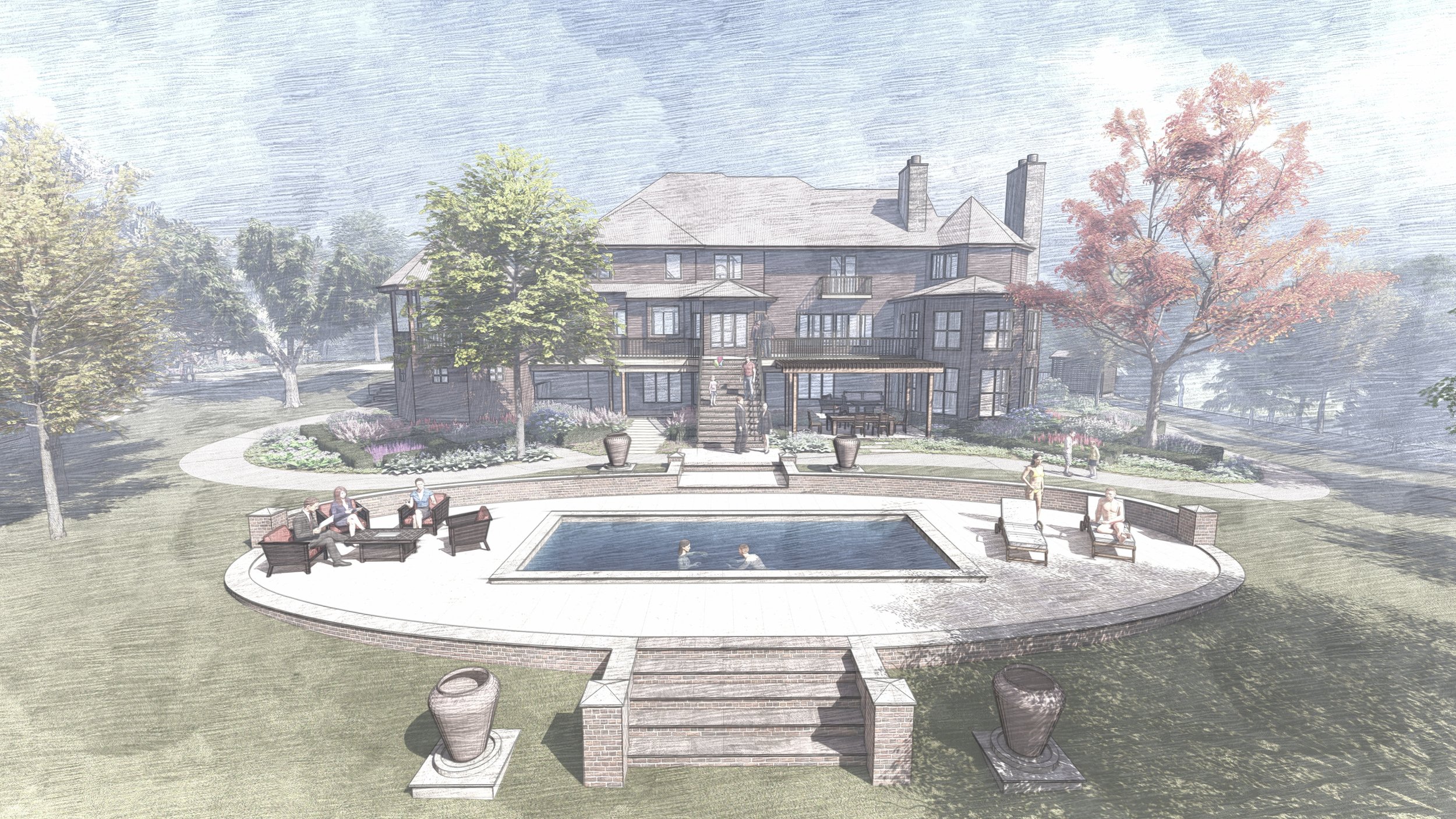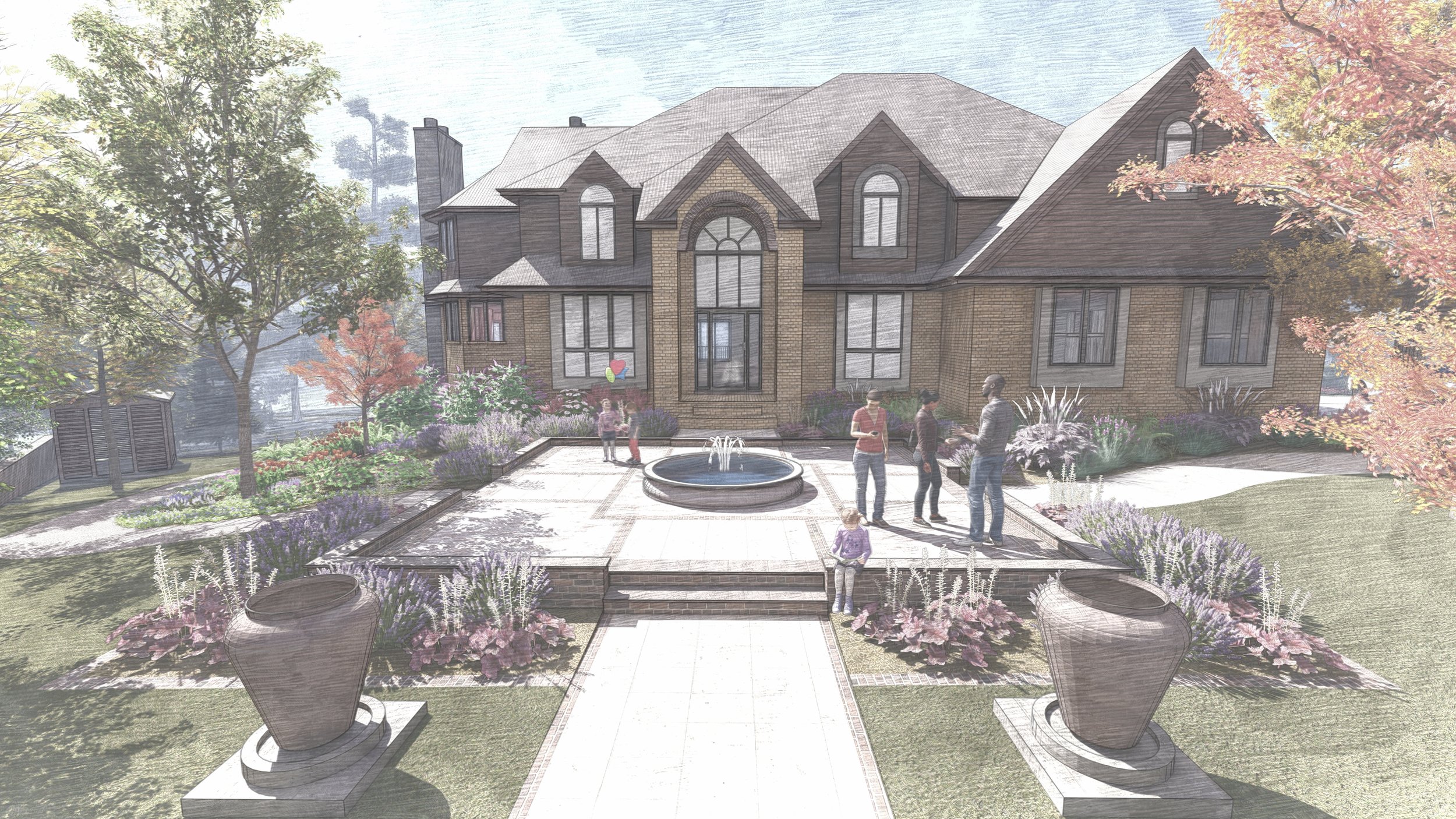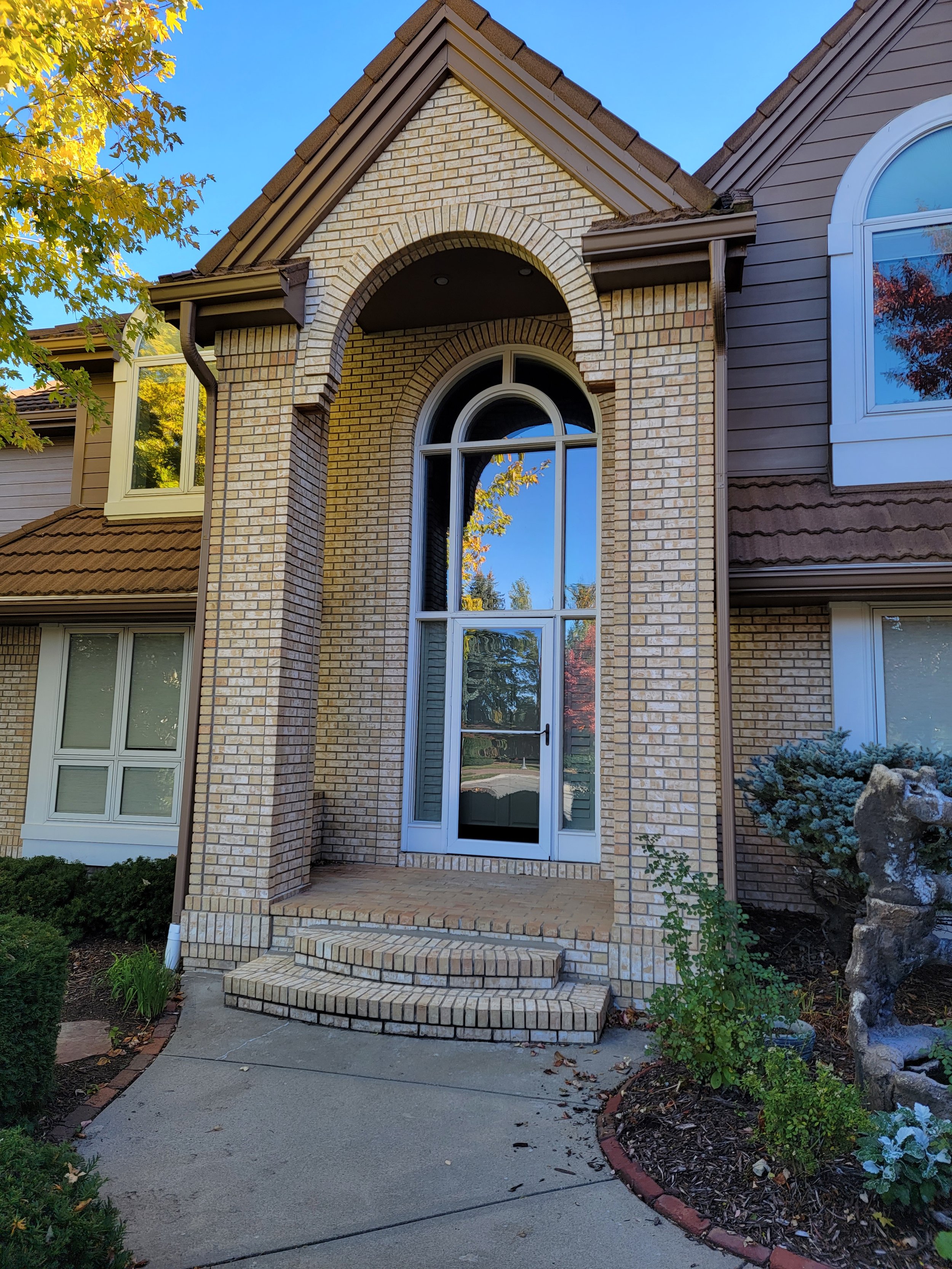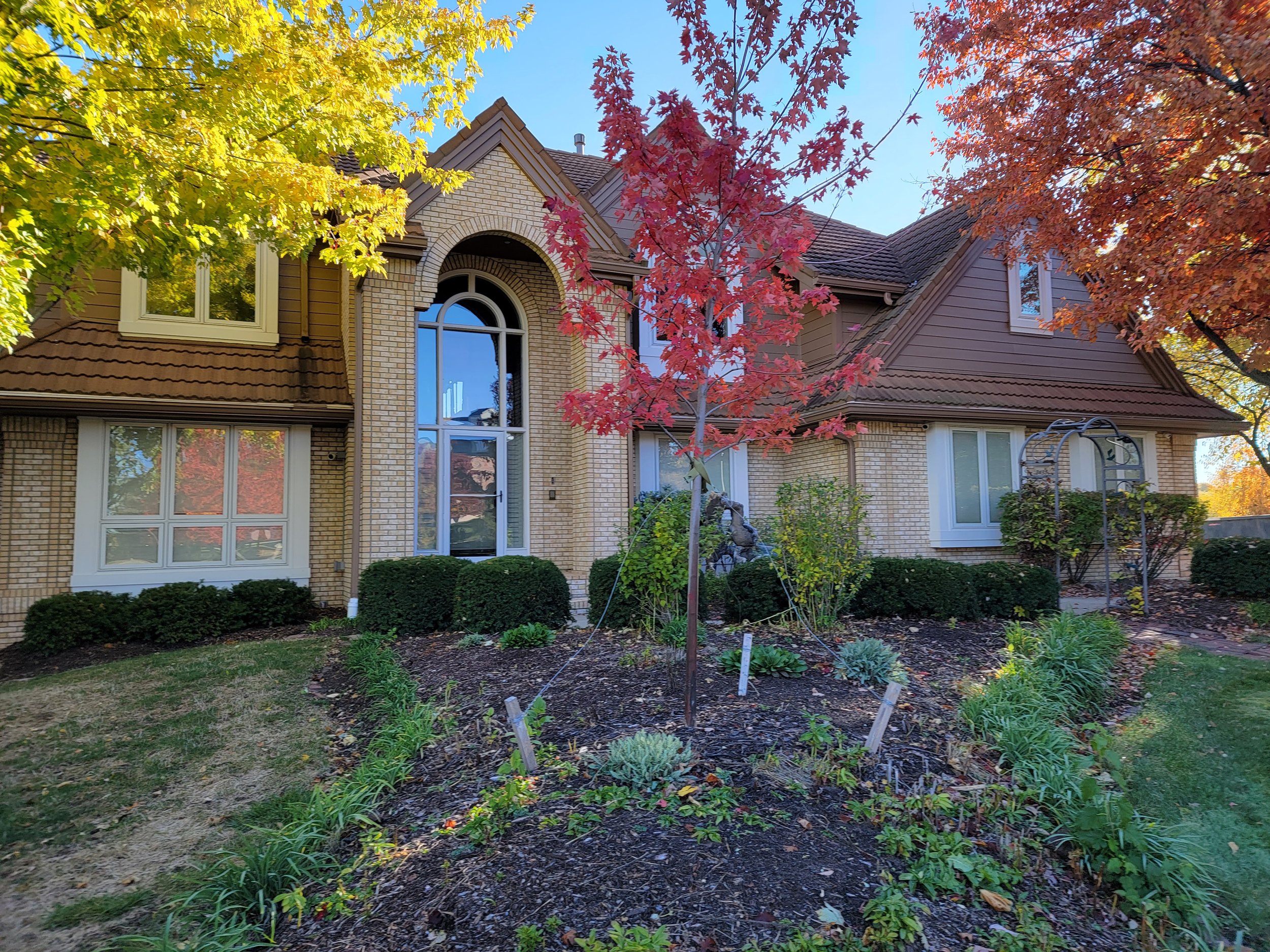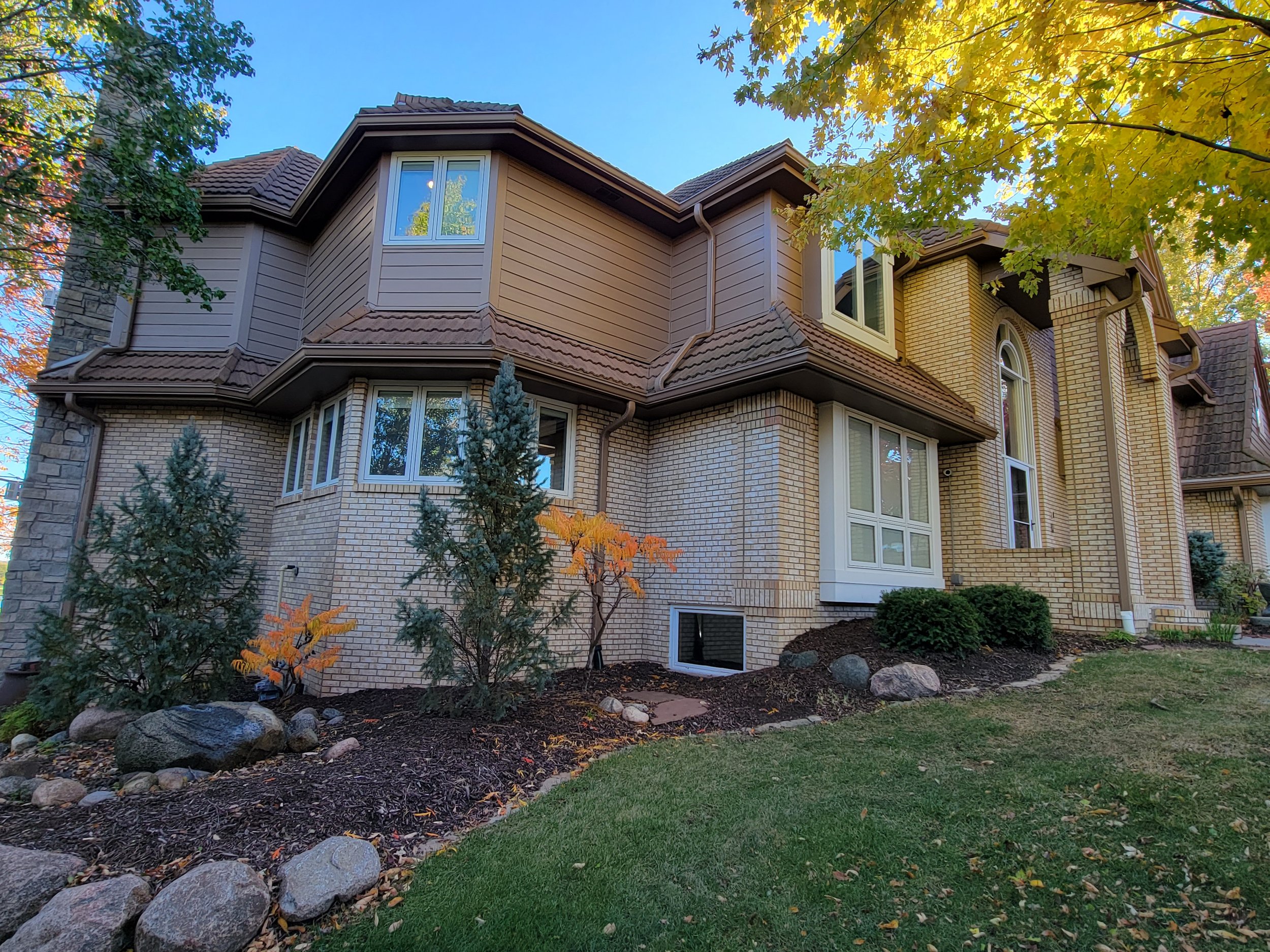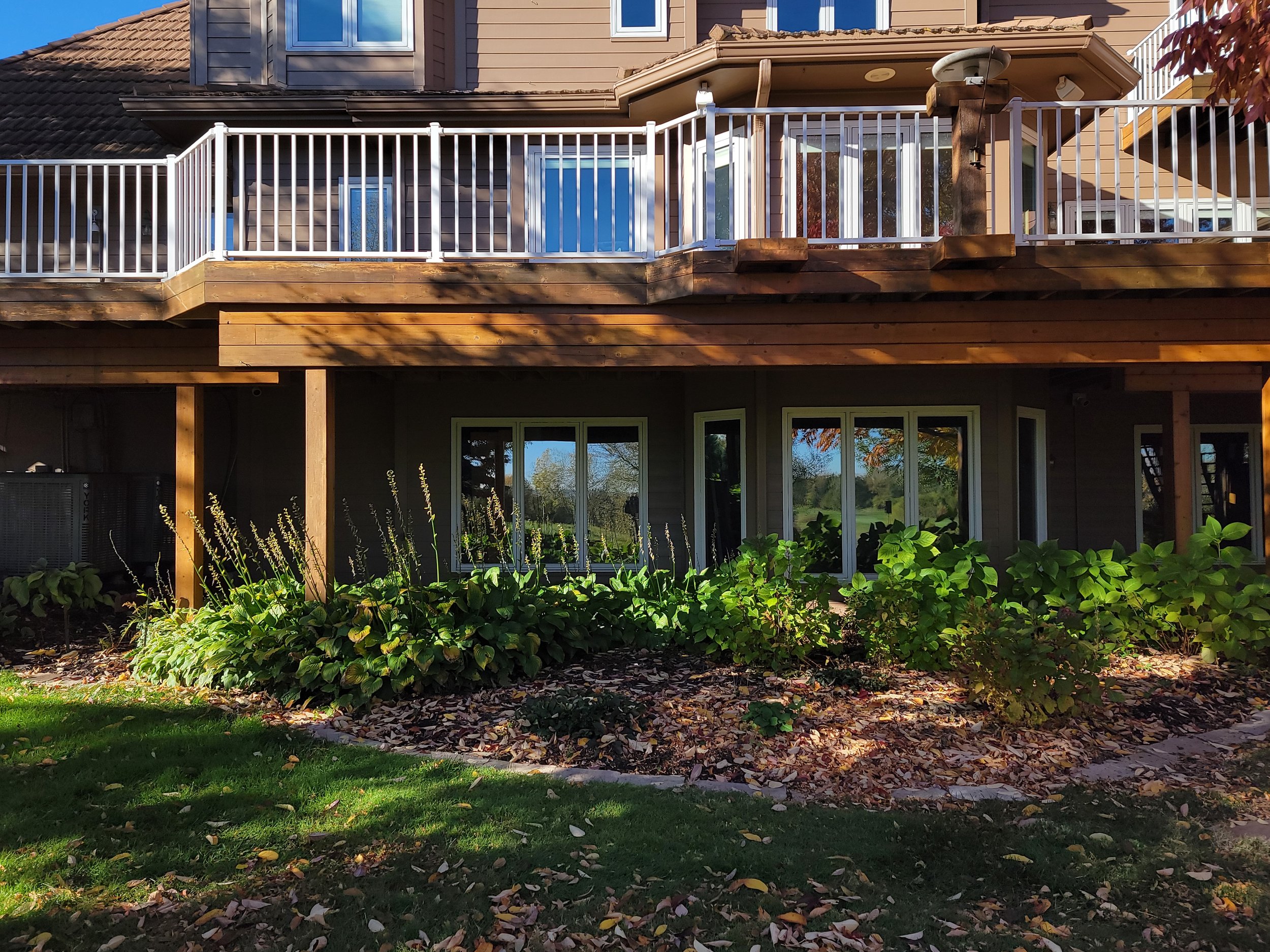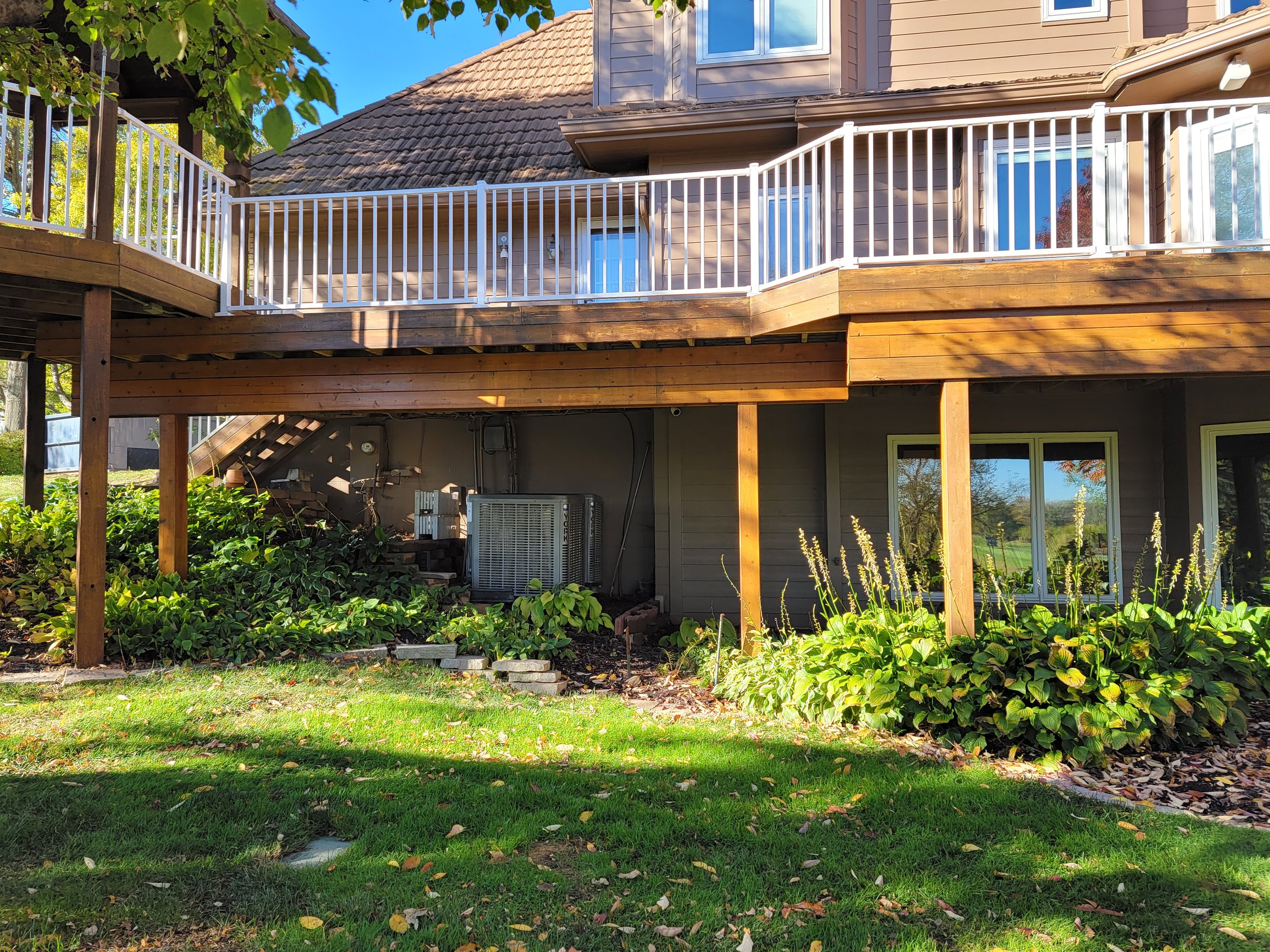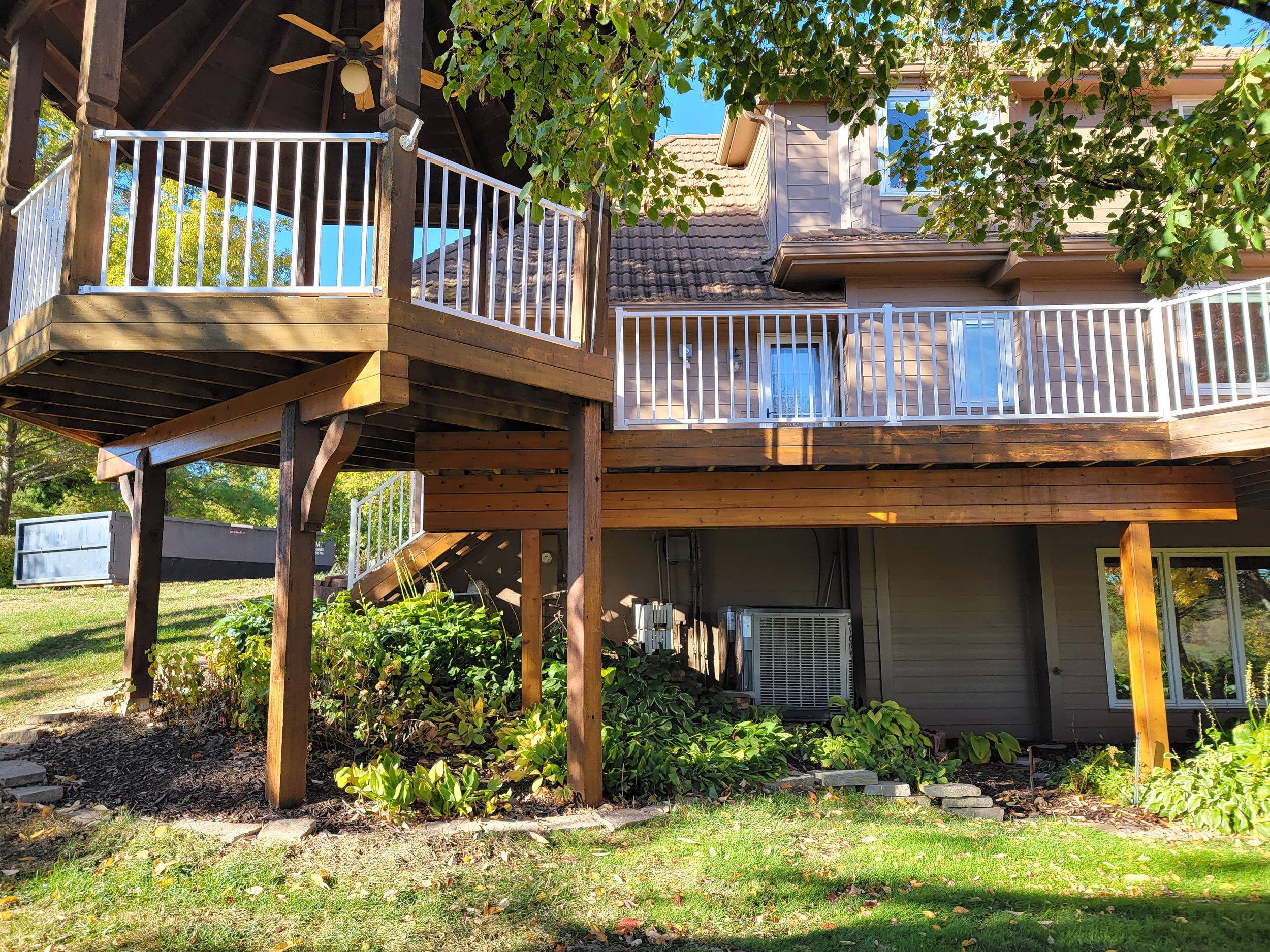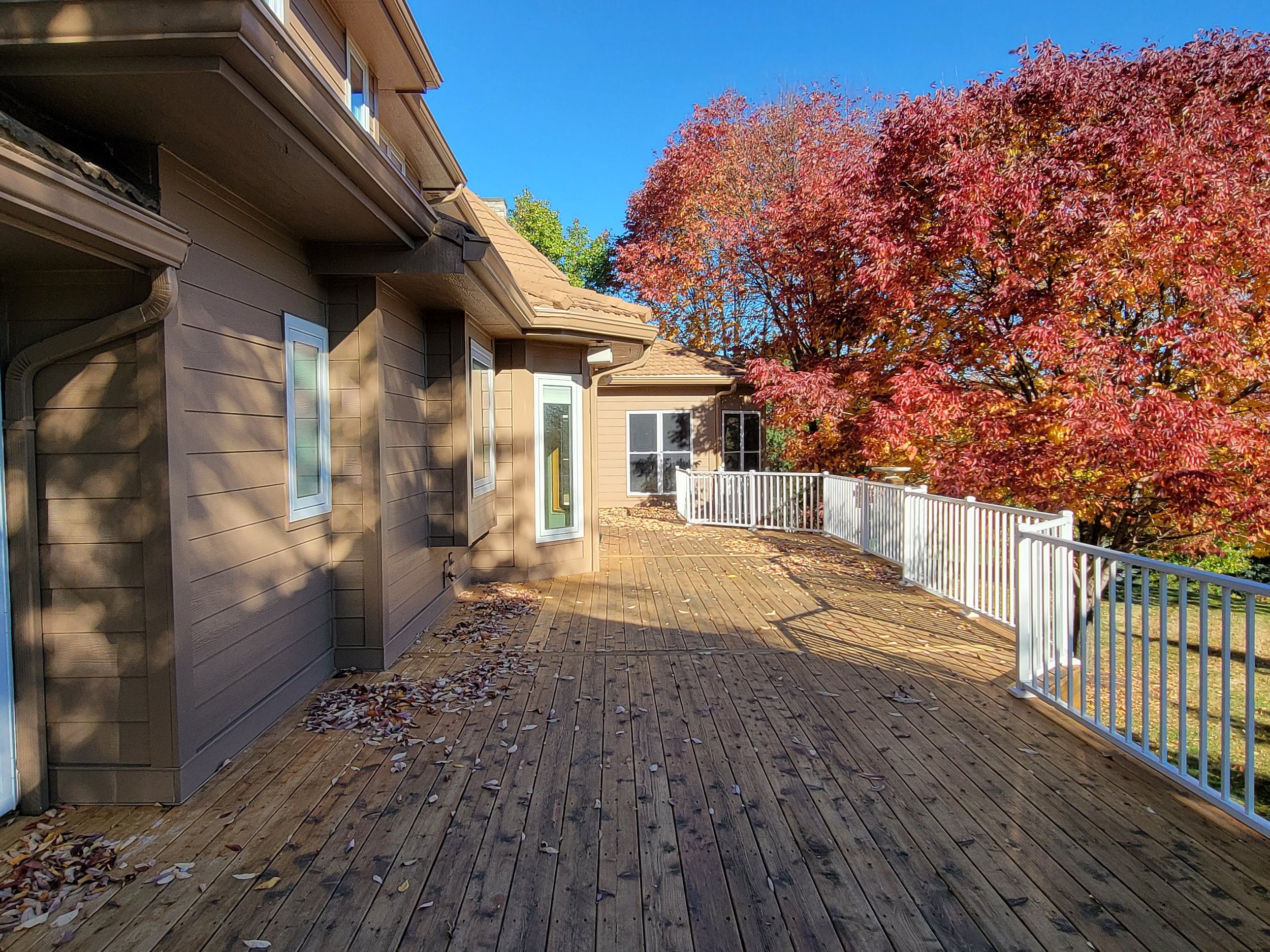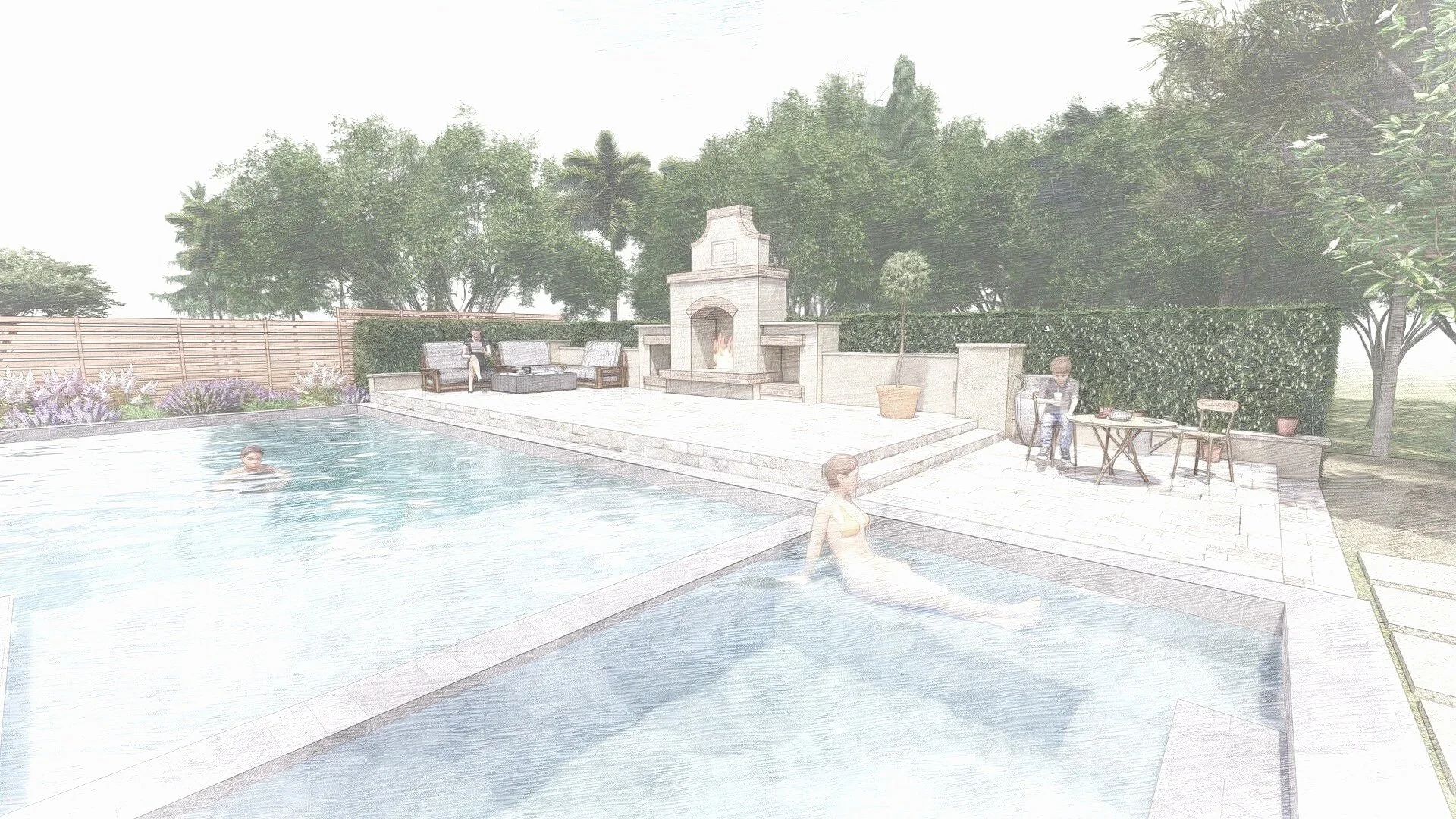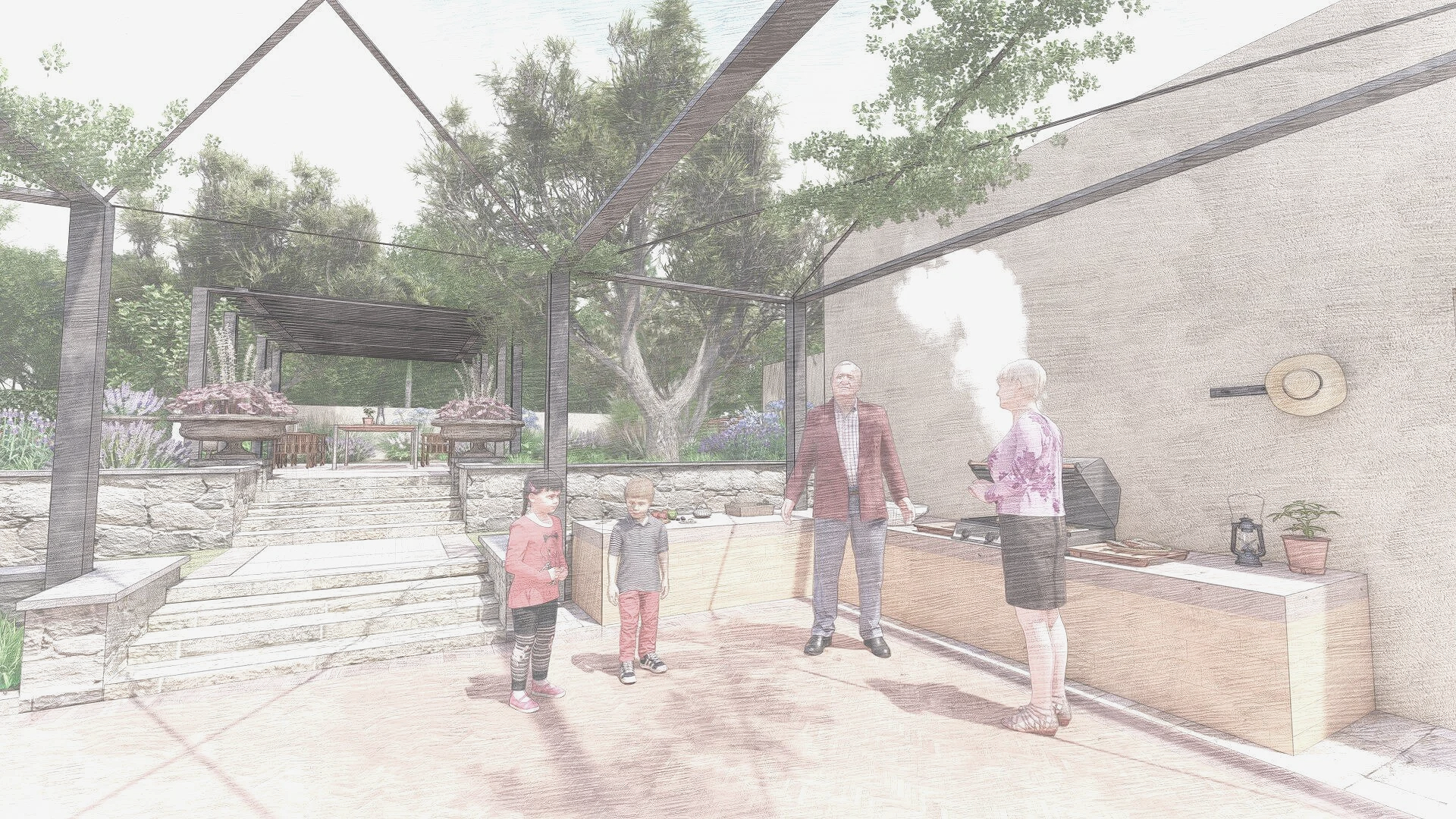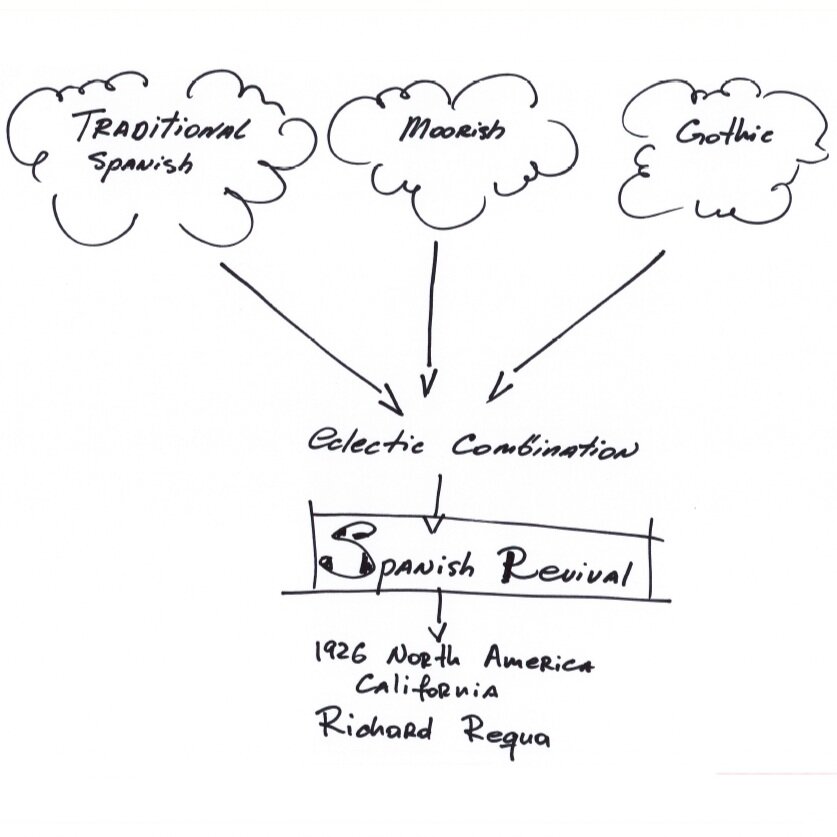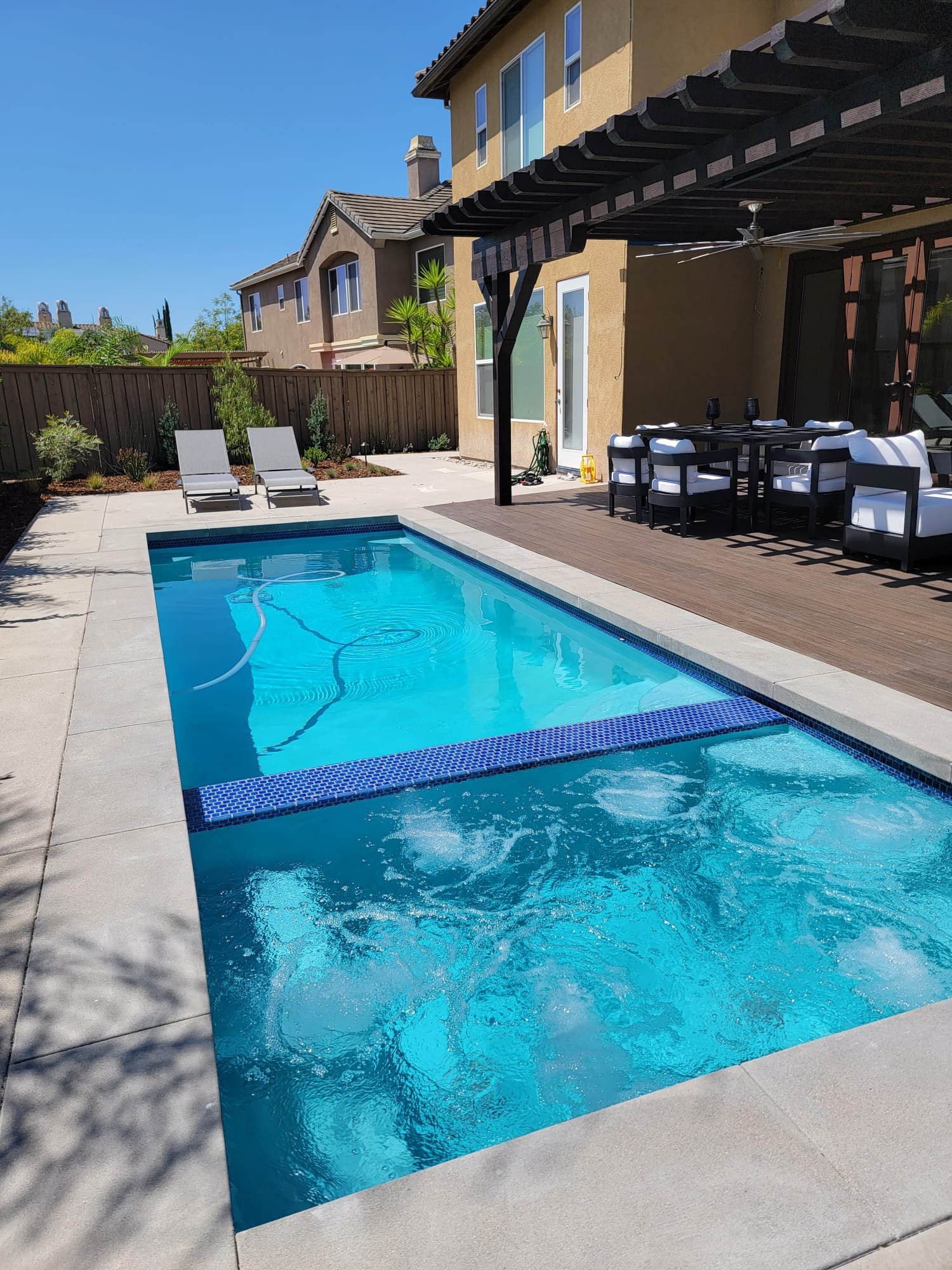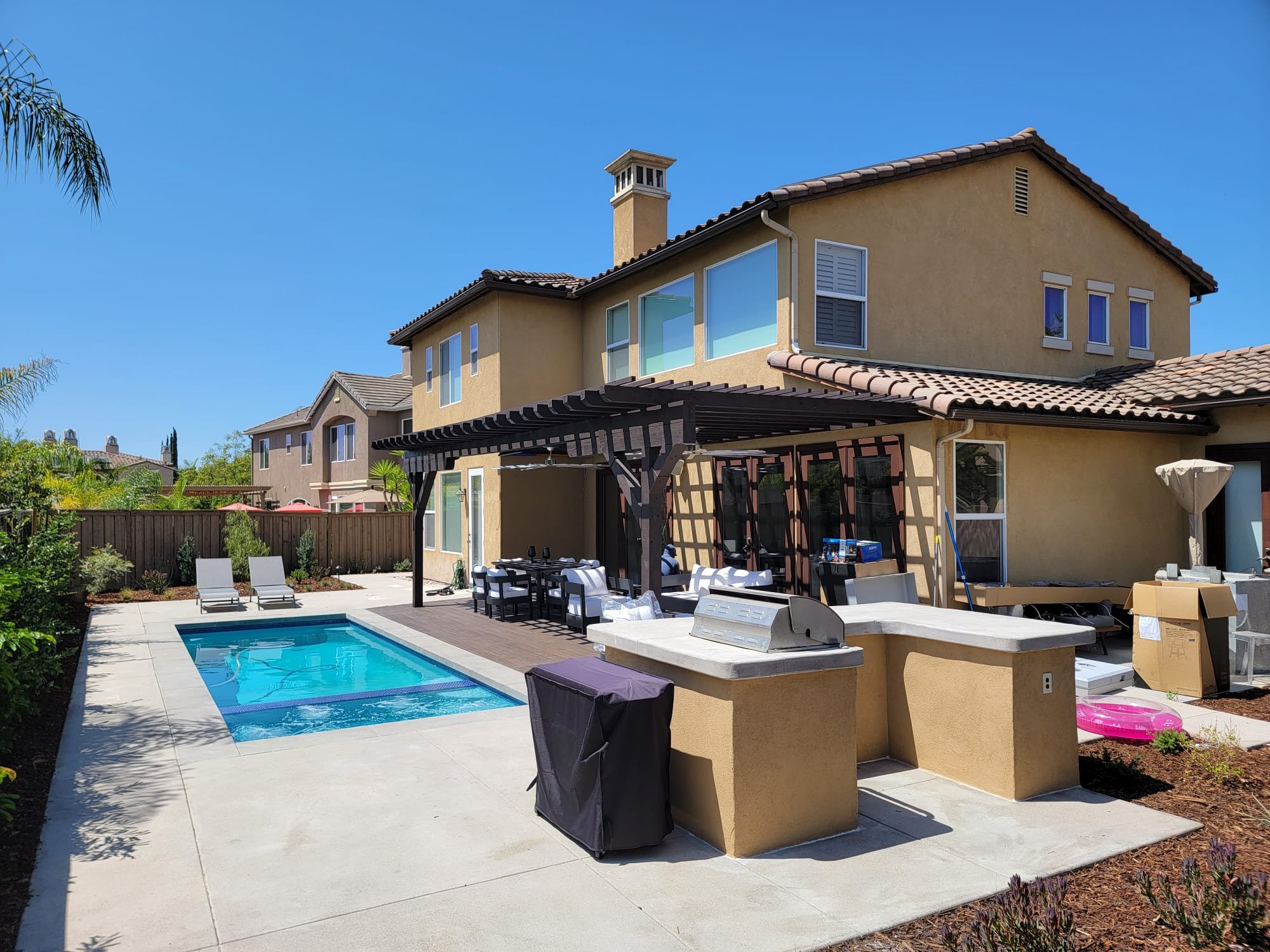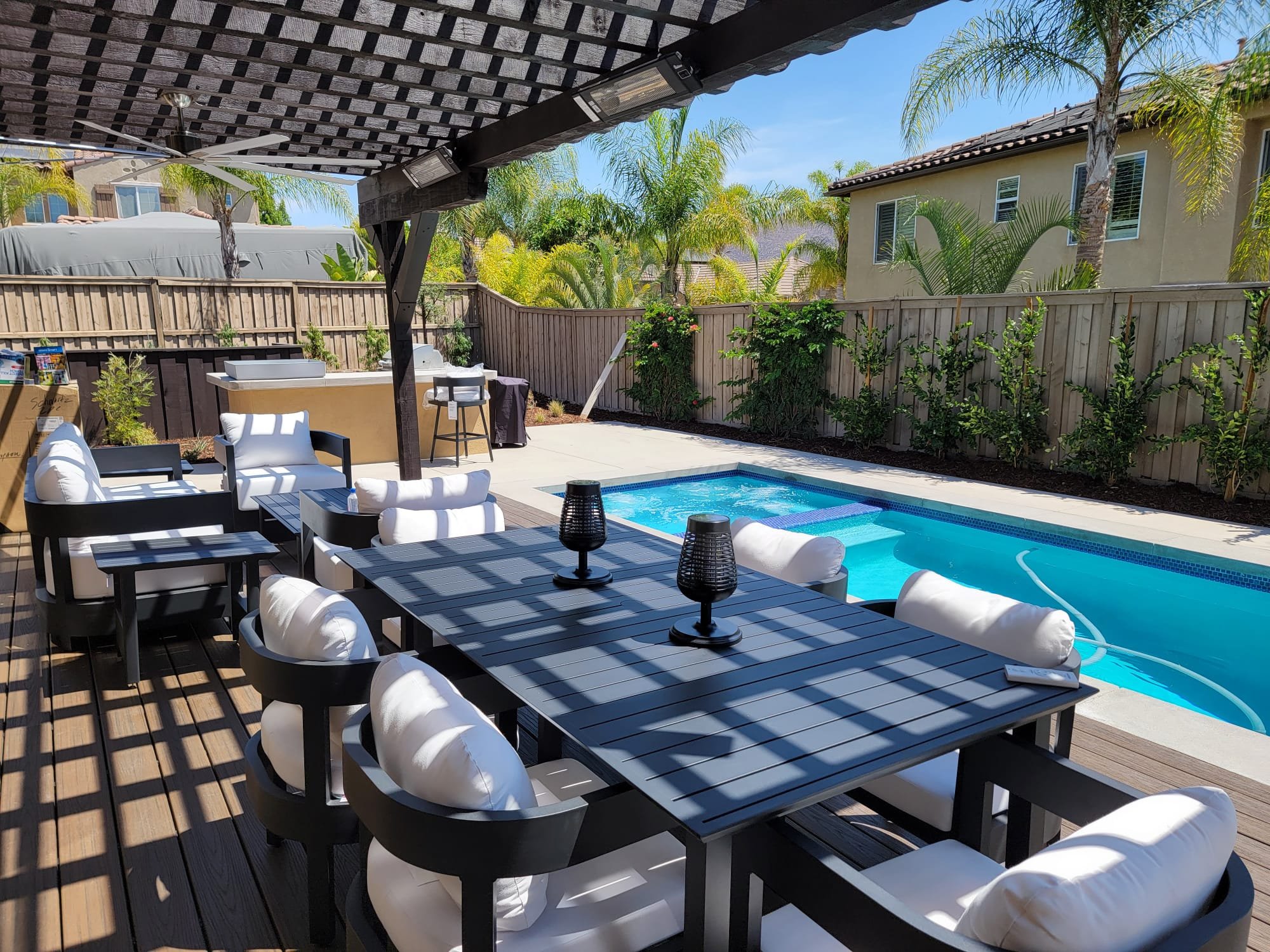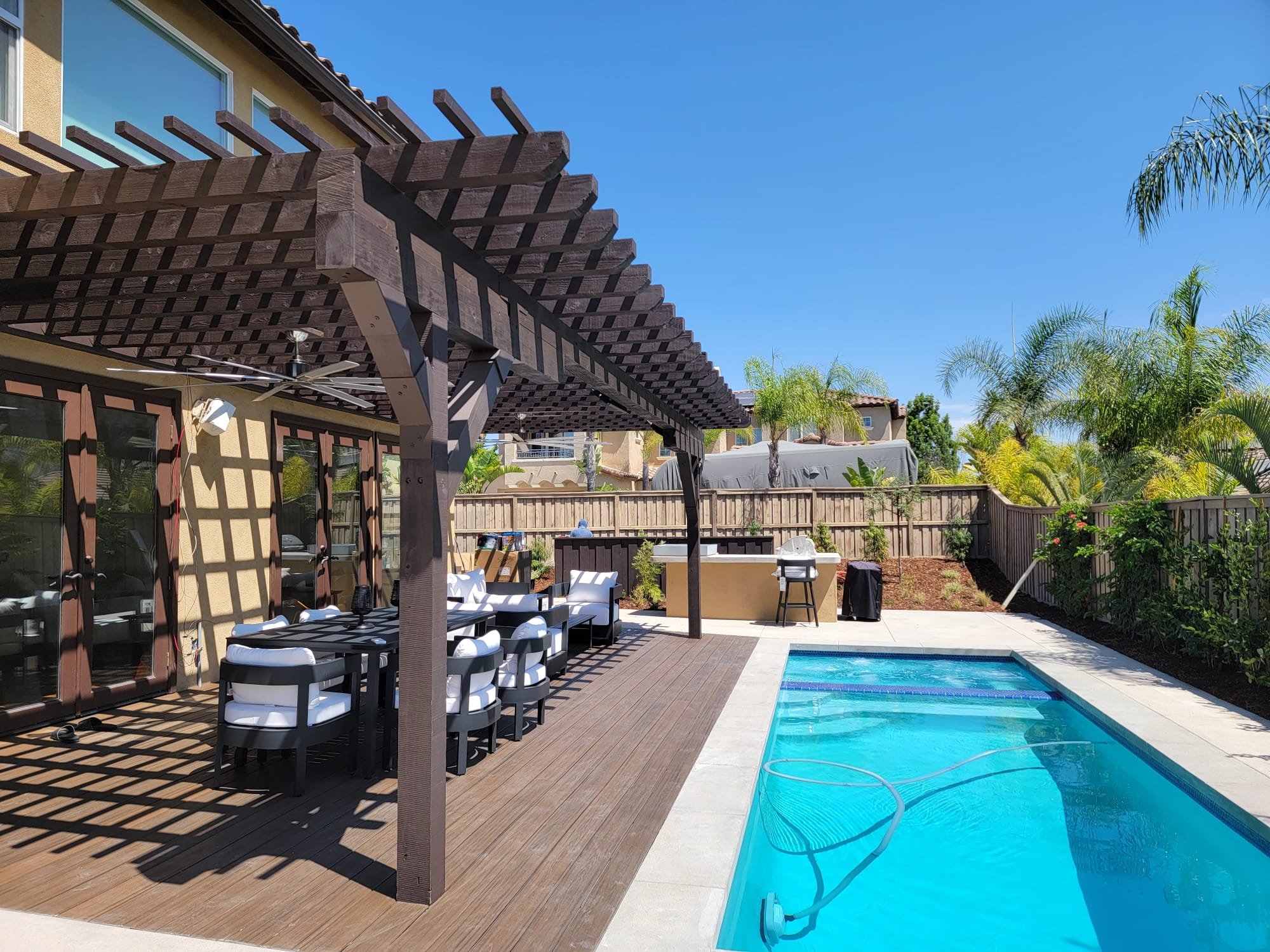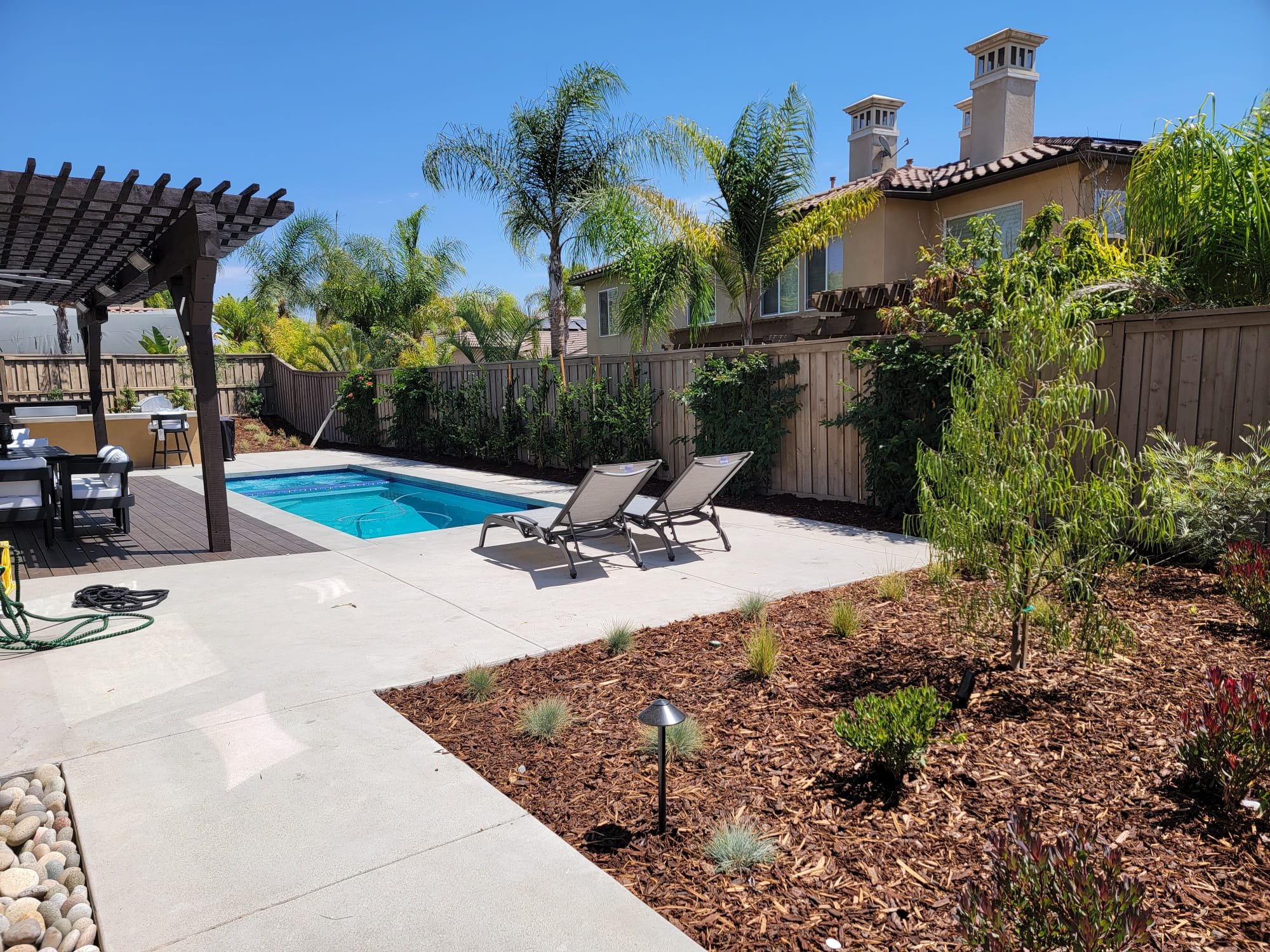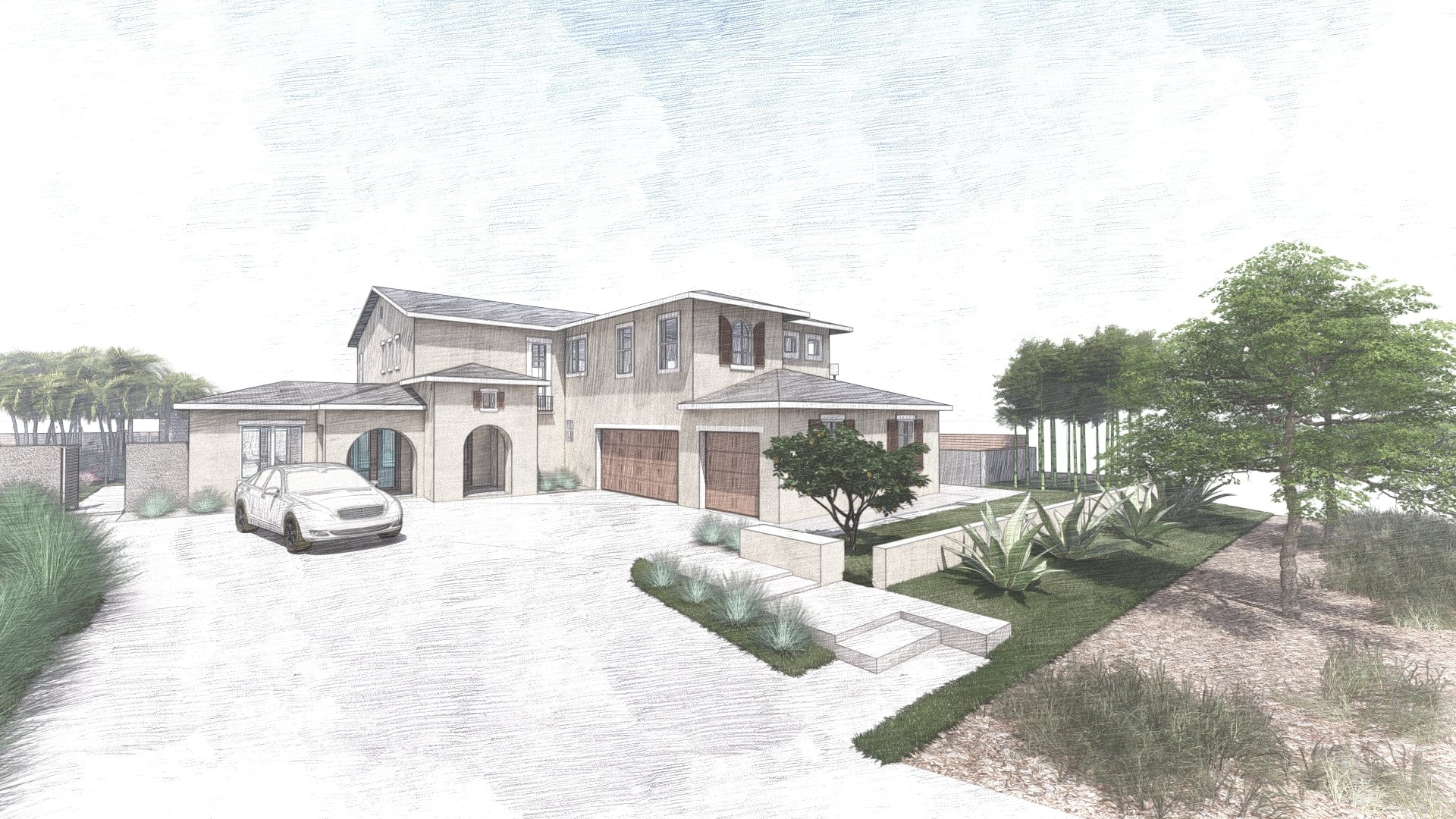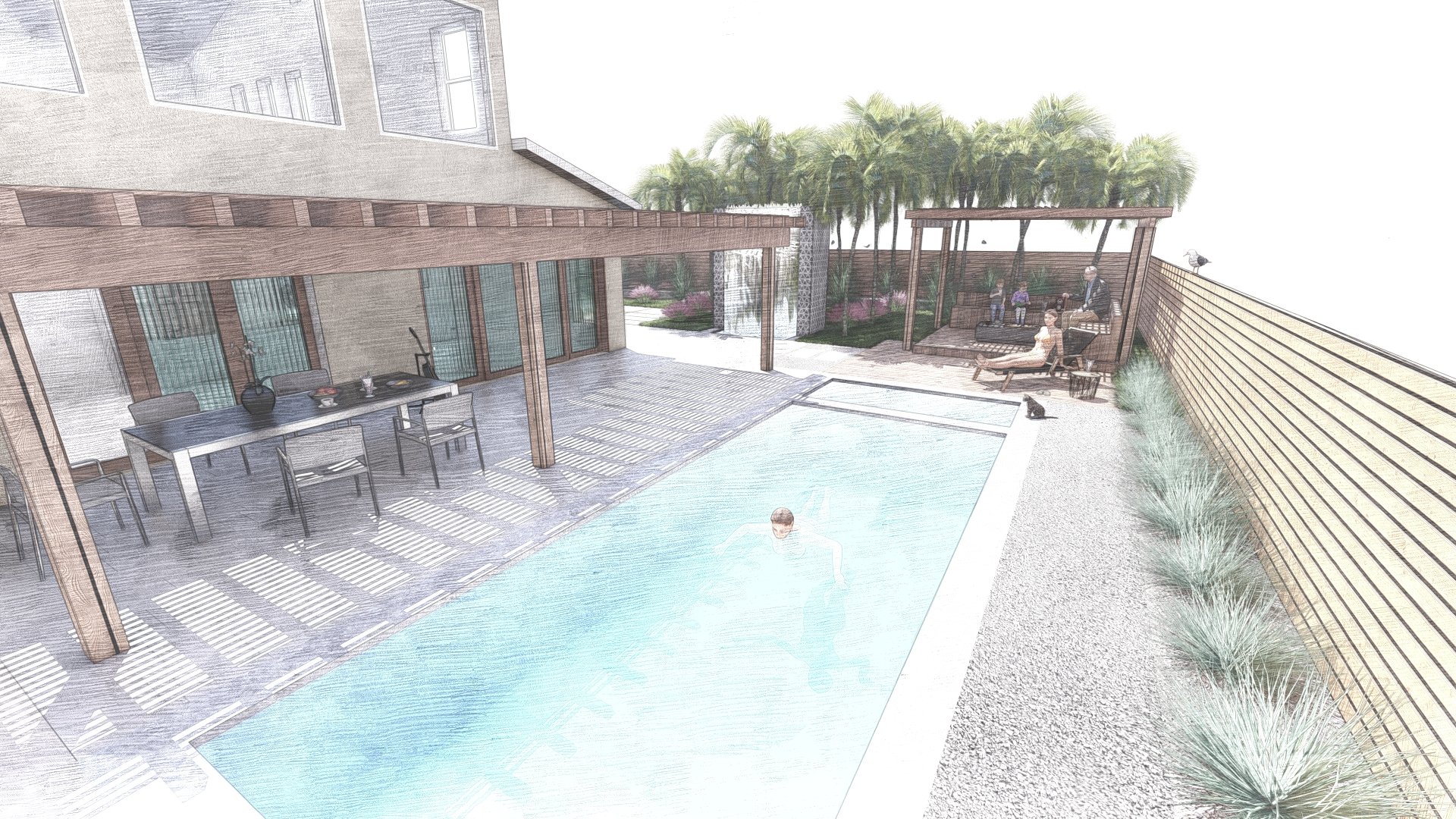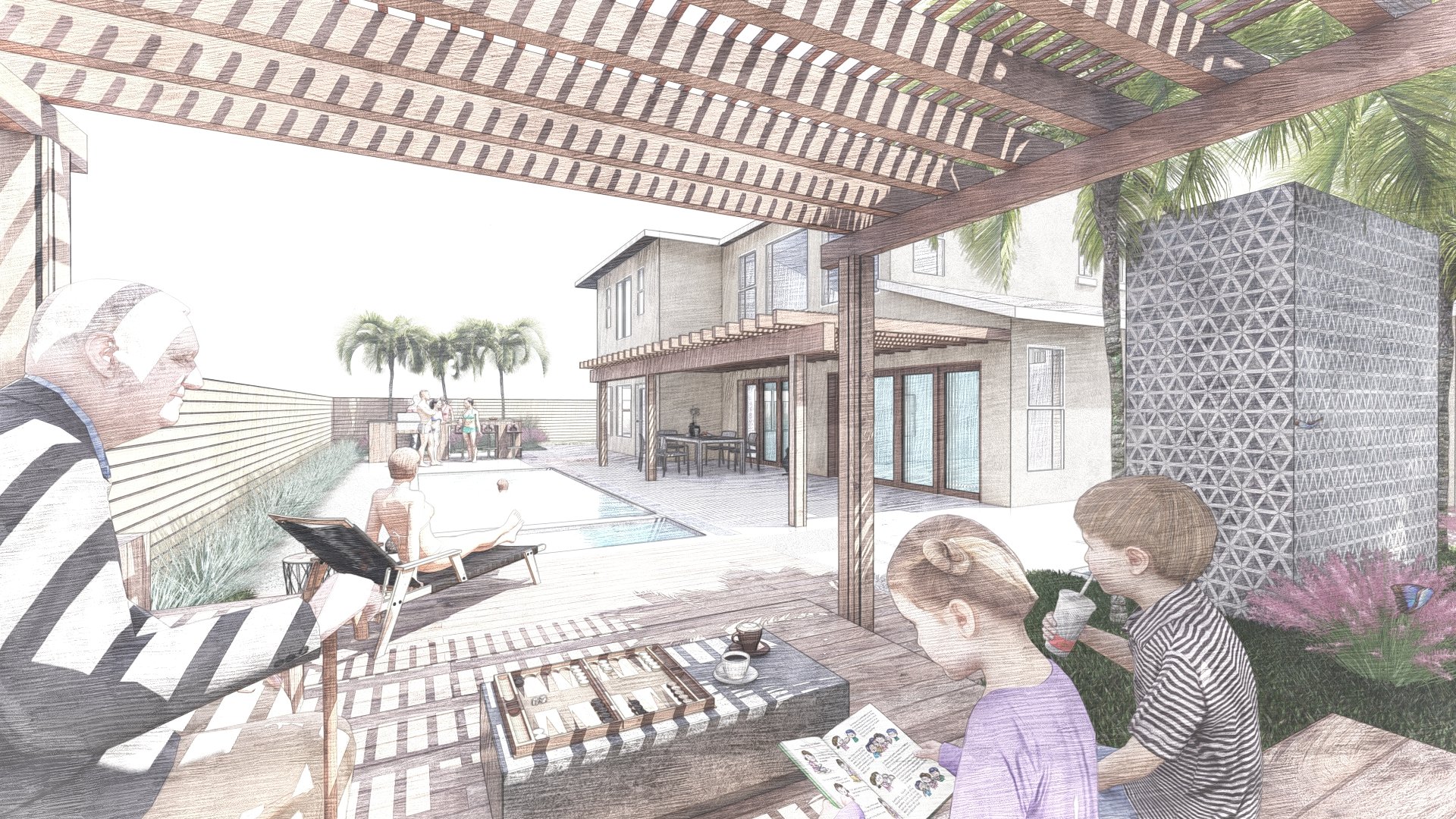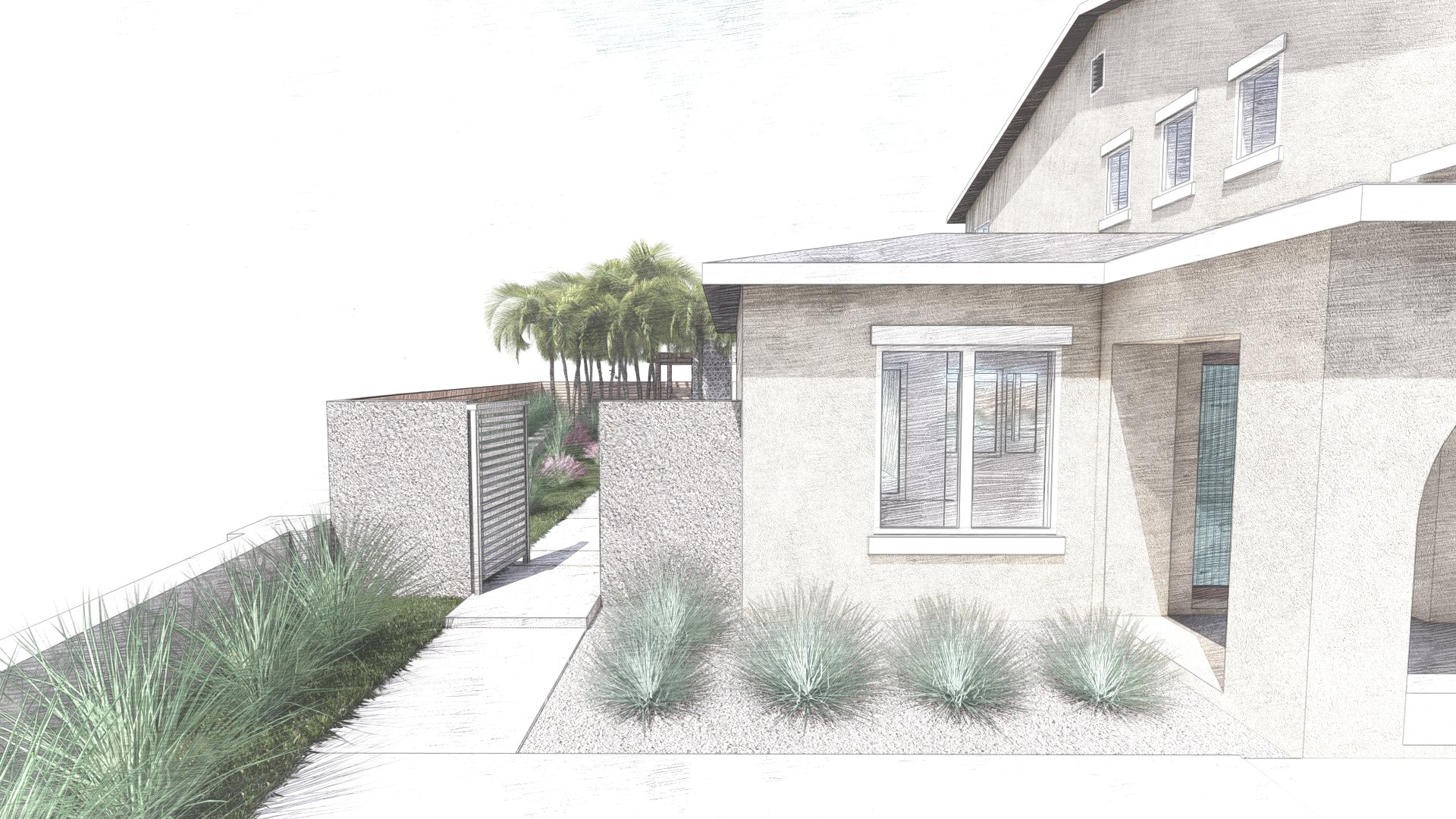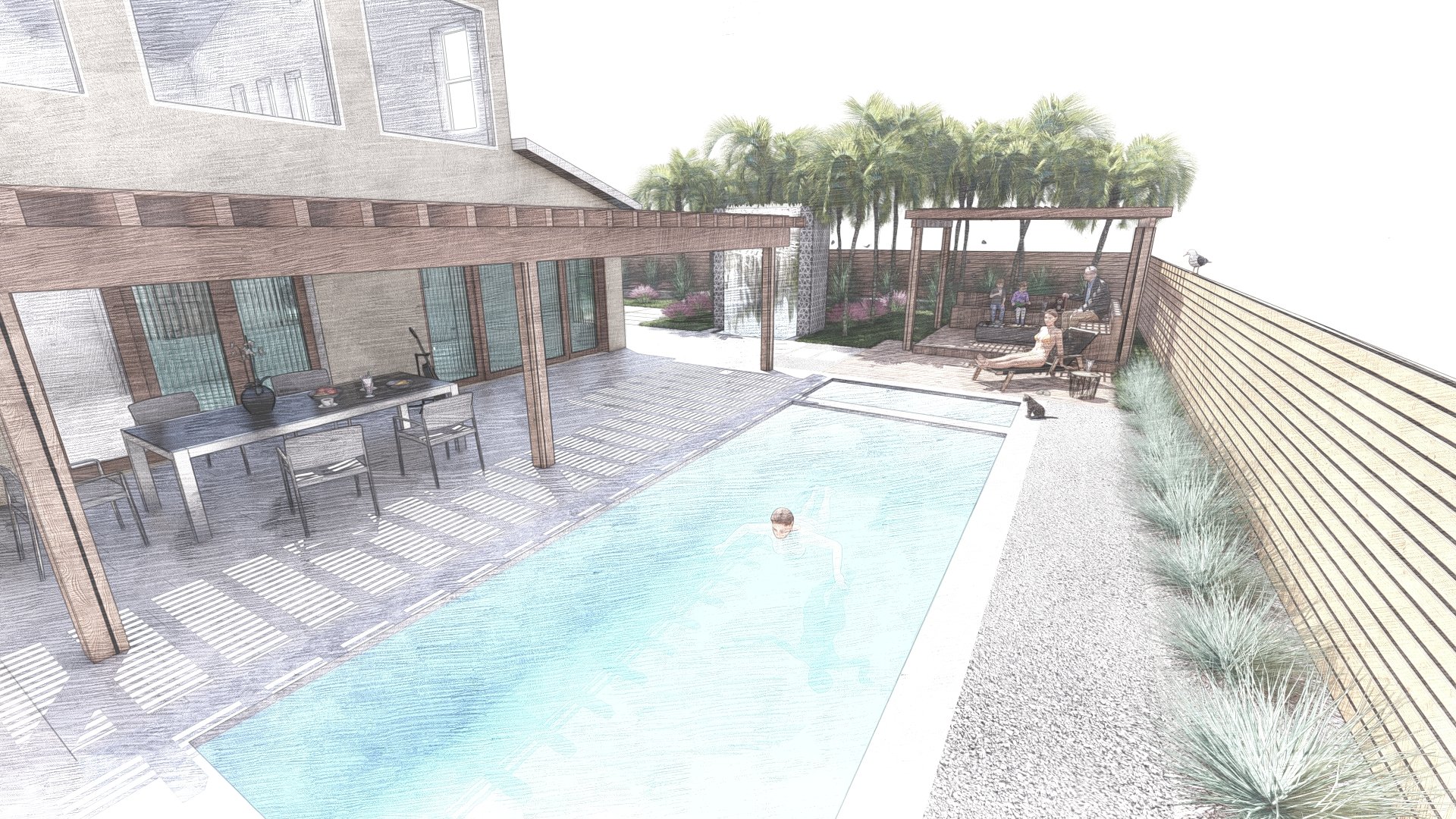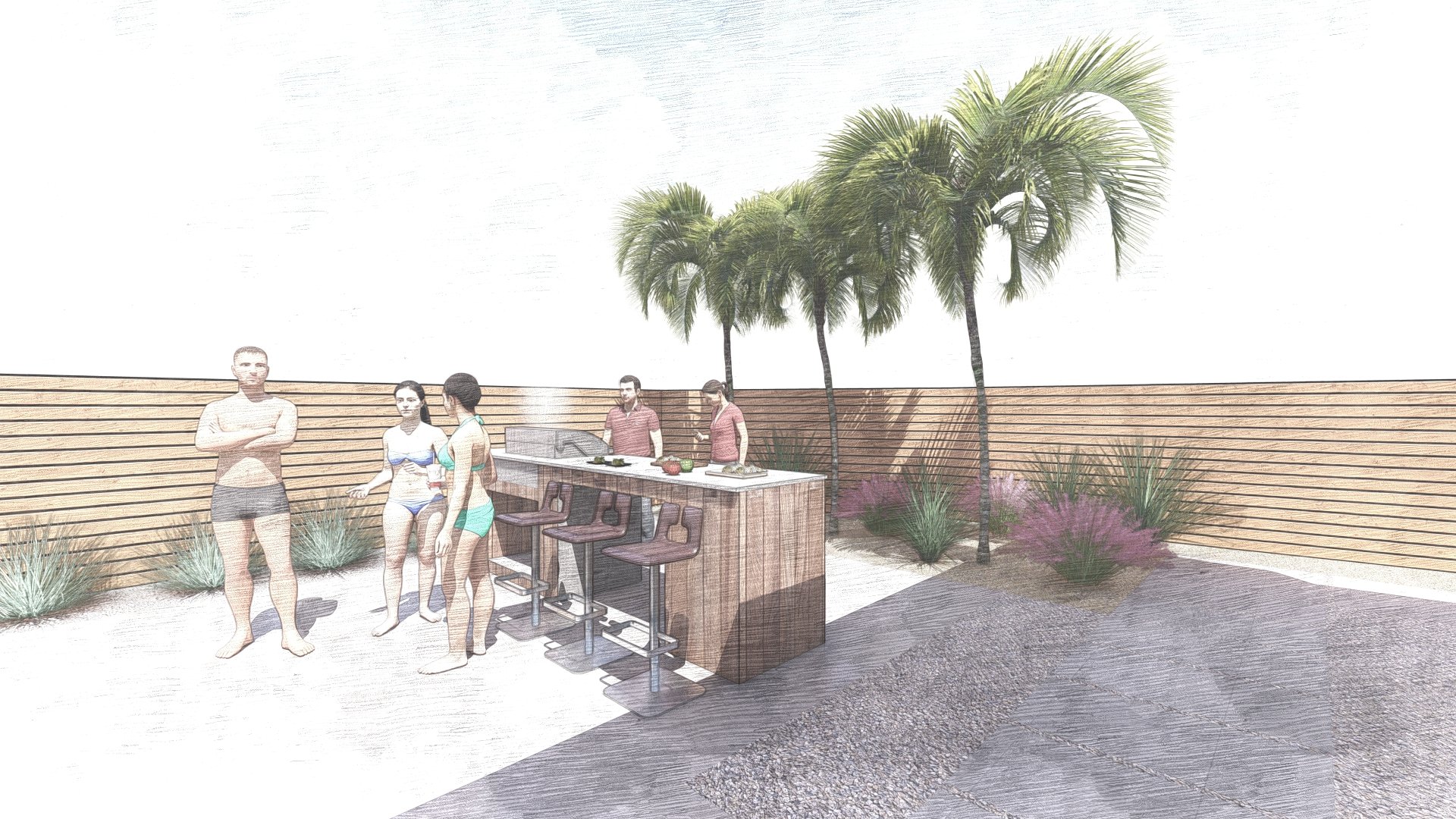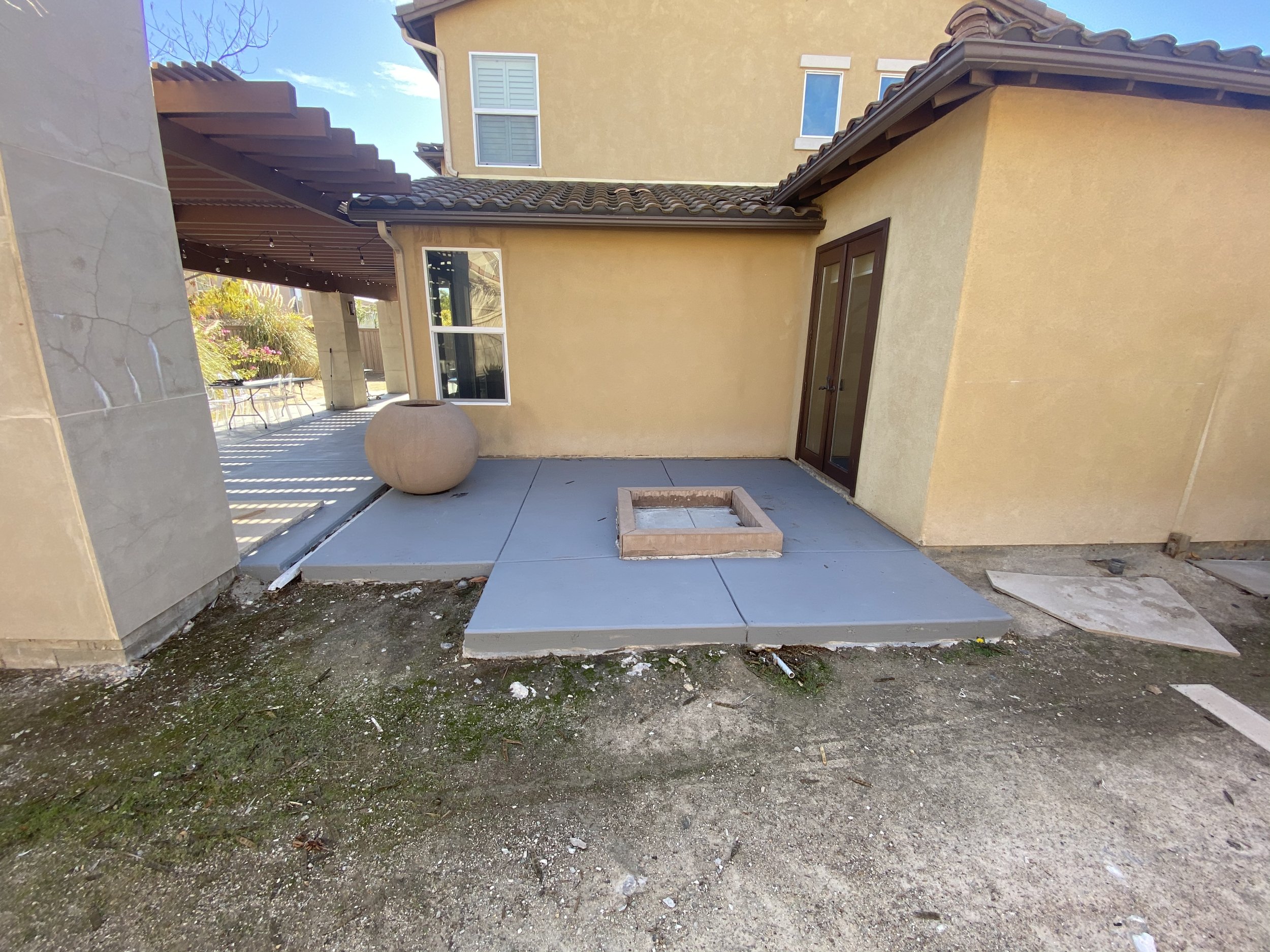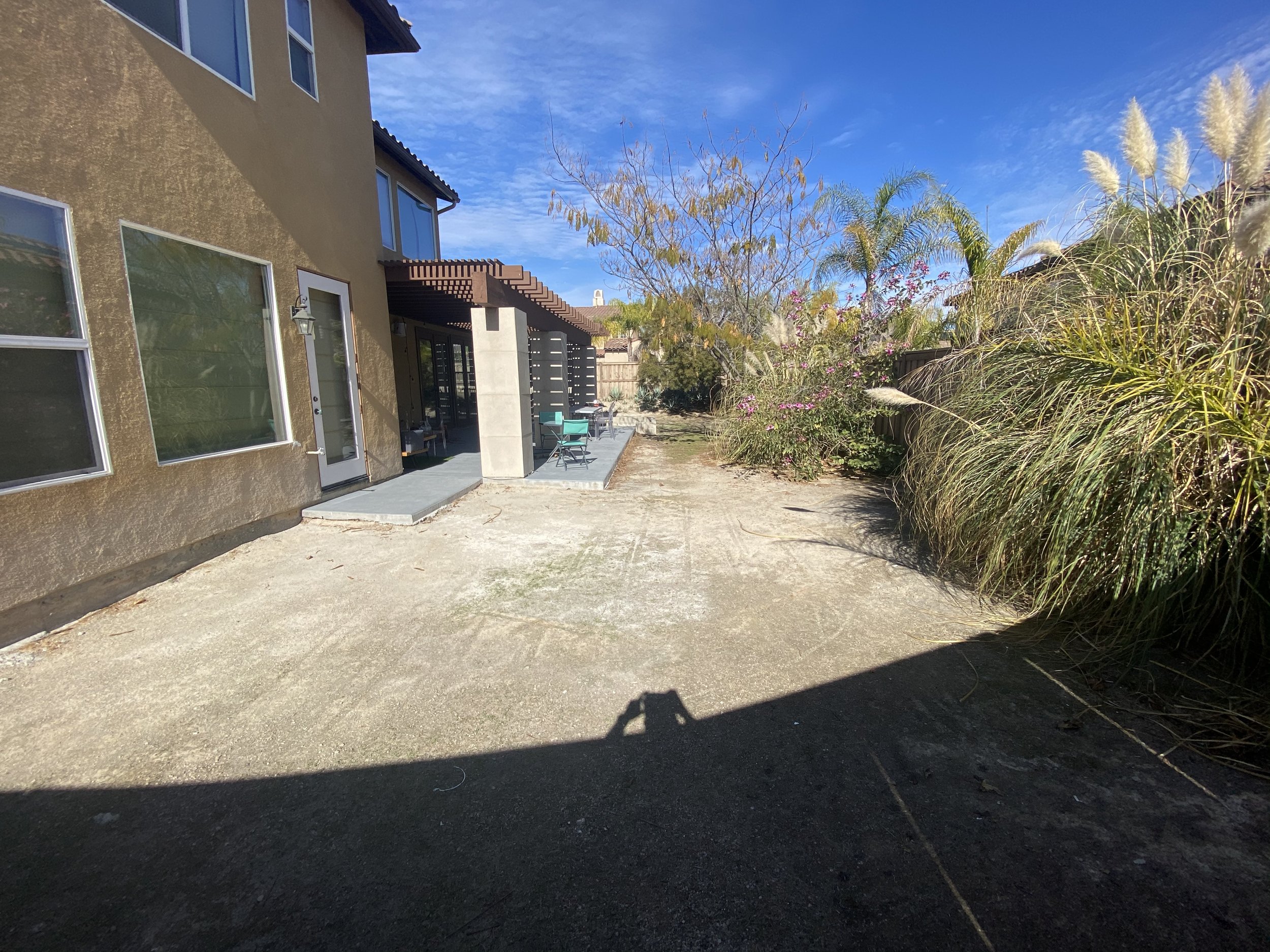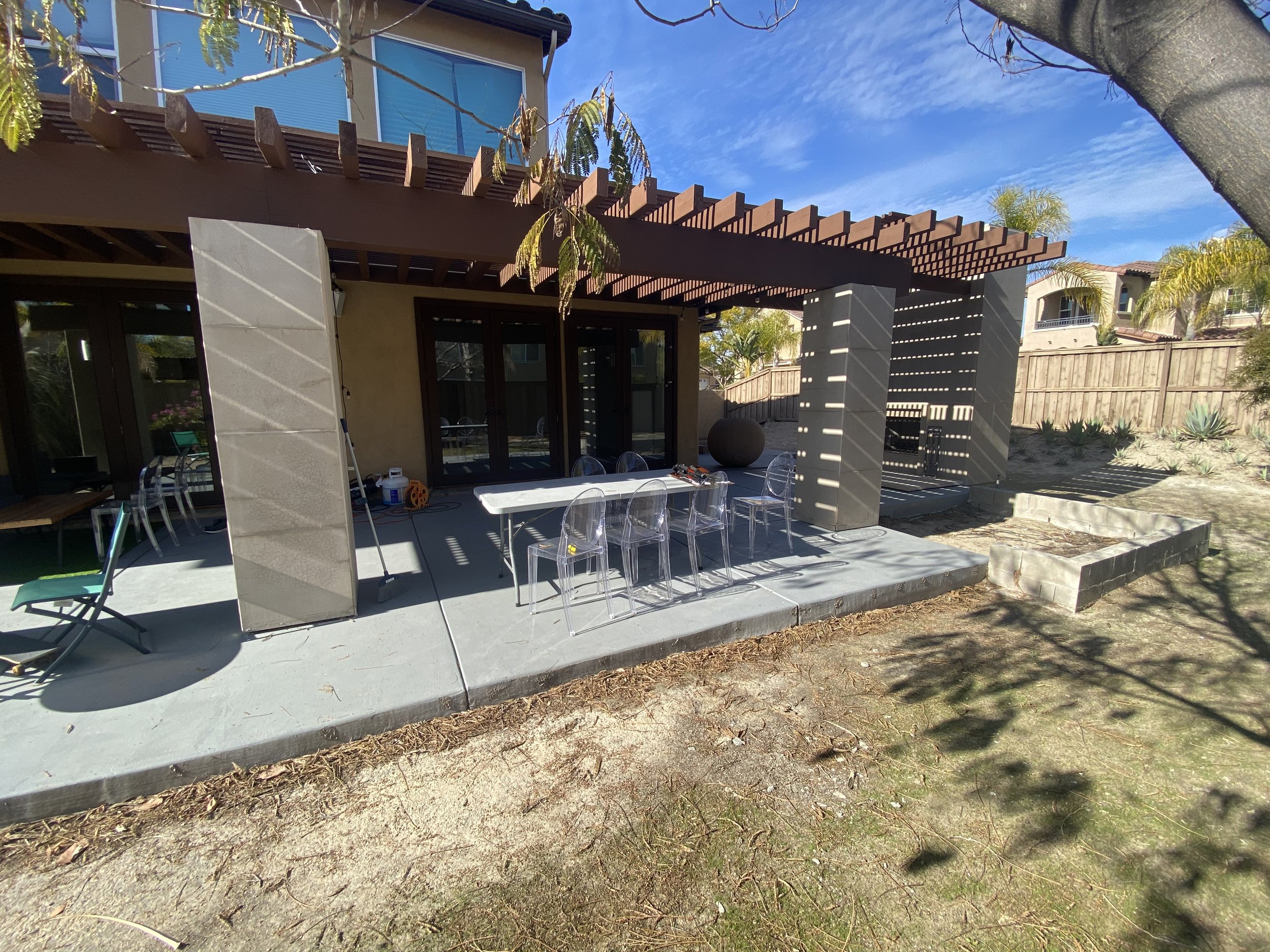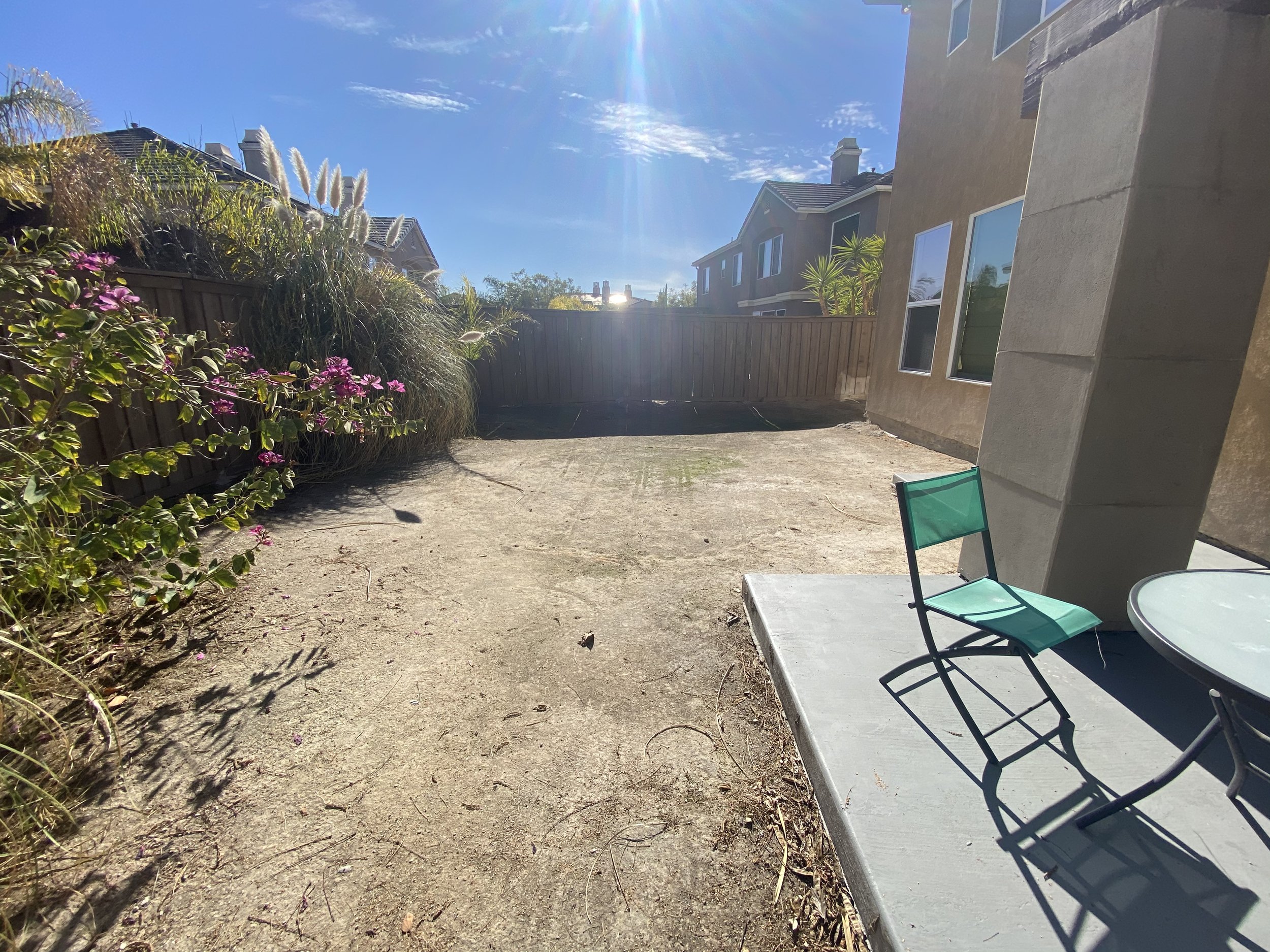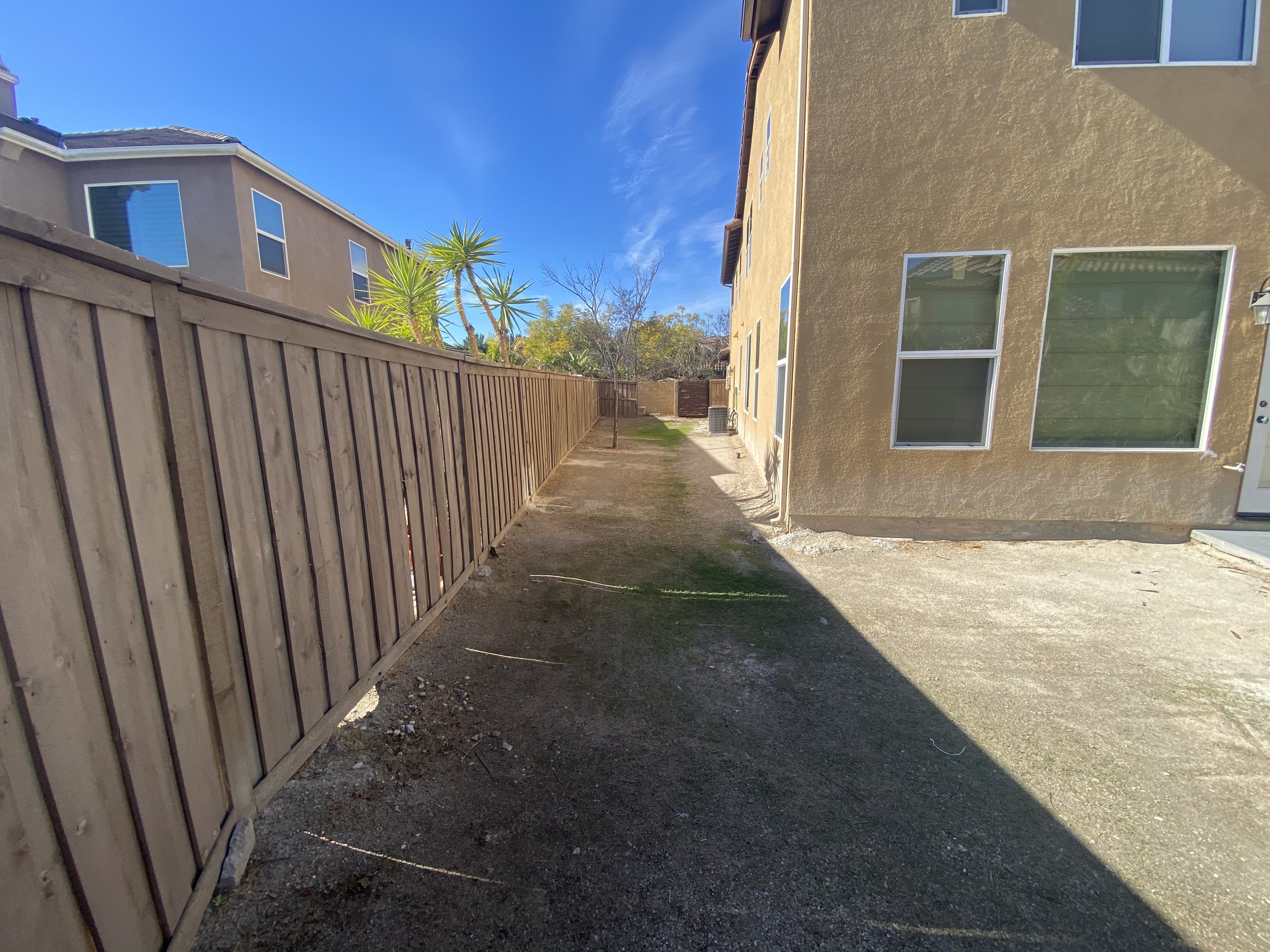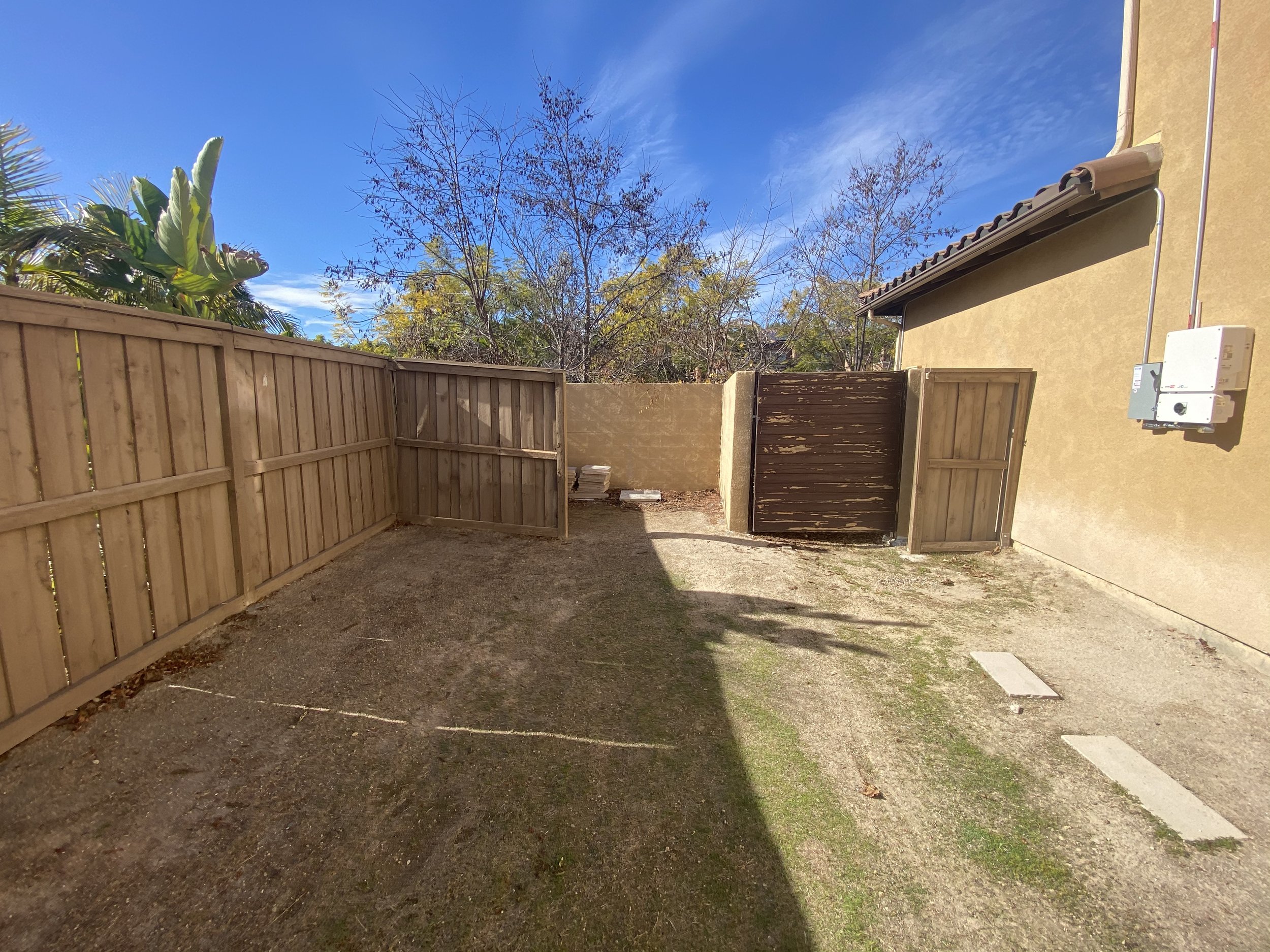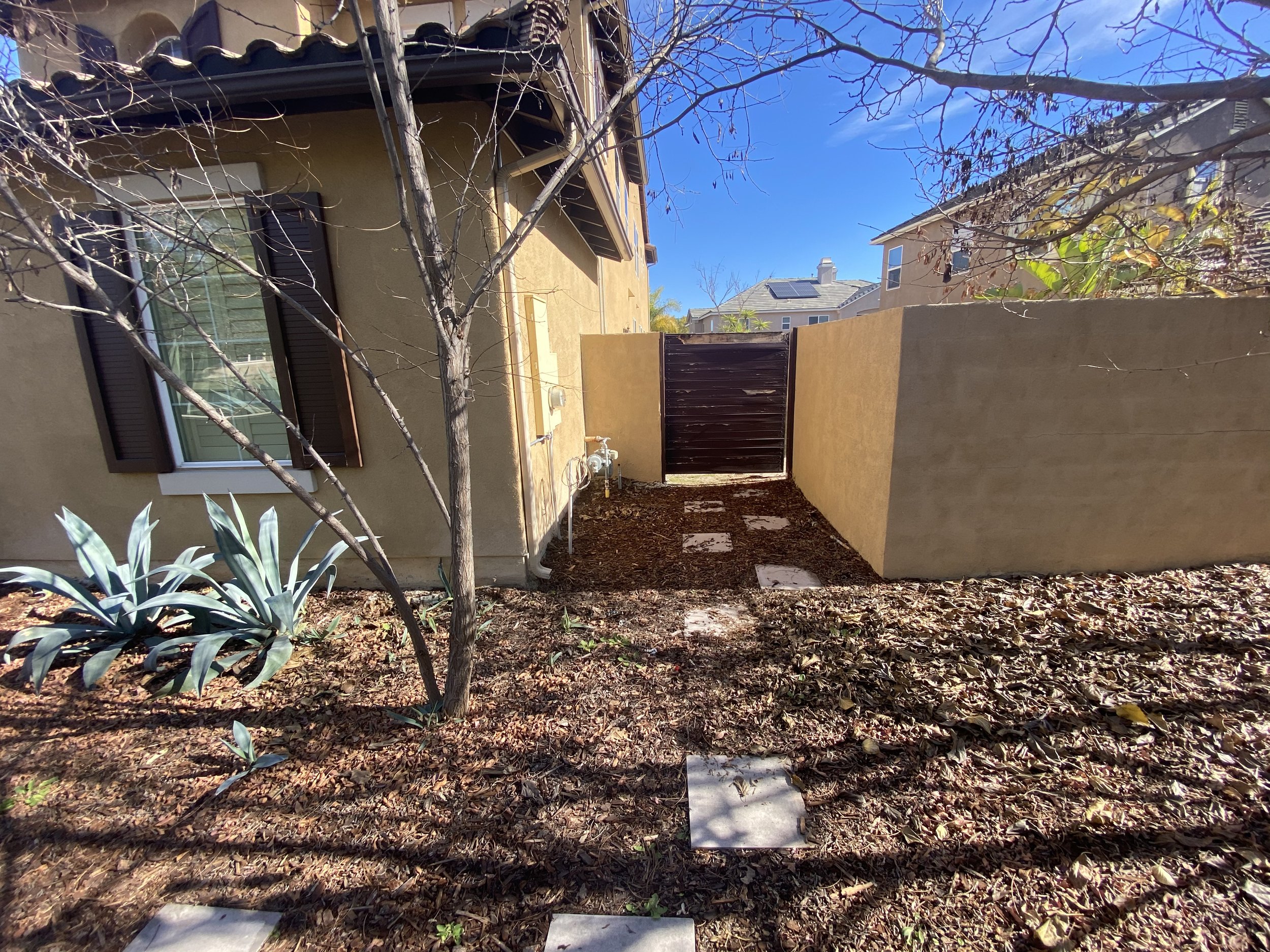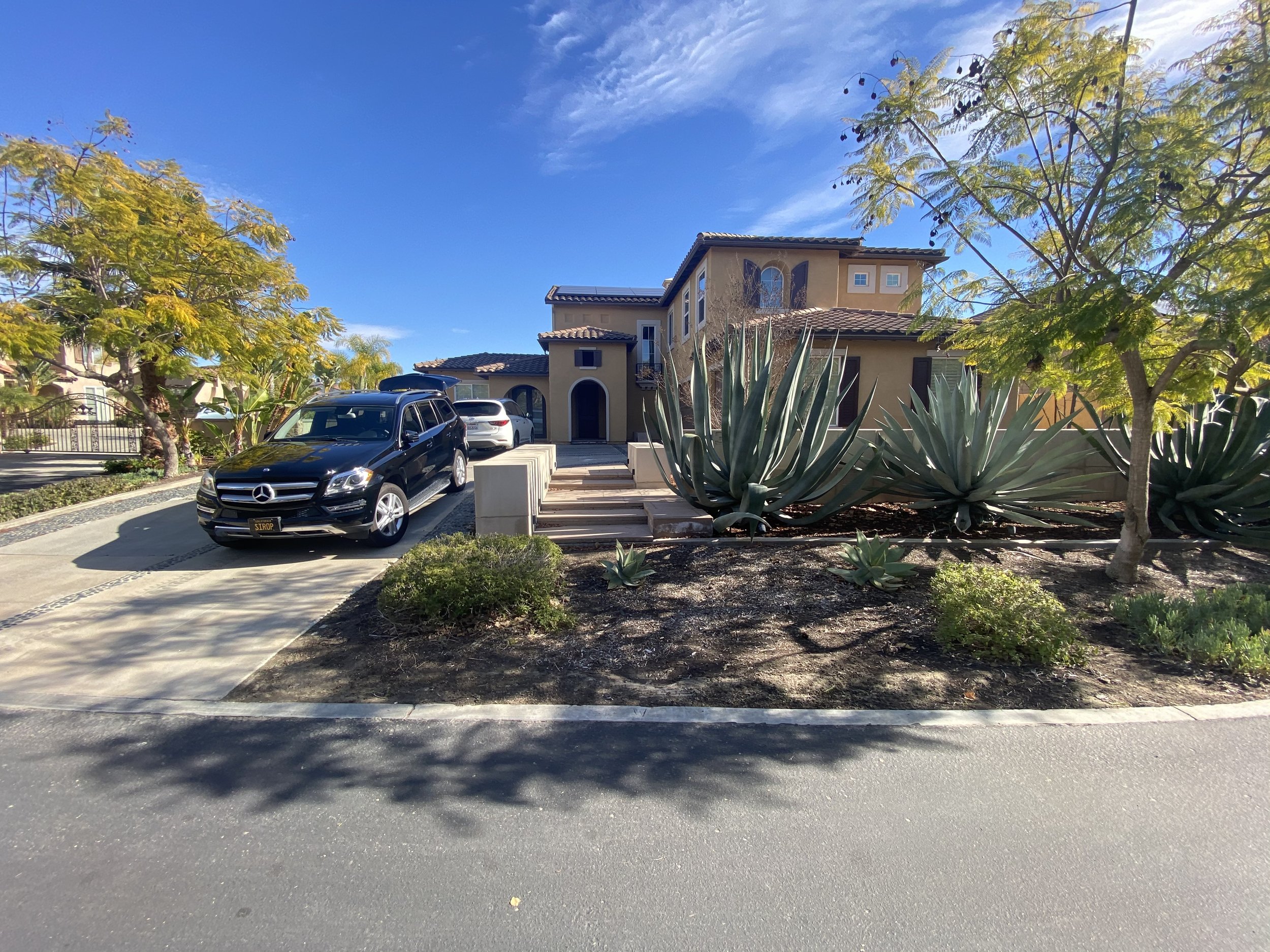Post-Classicism in Transition to Modernism. Omaha, Nebraska
A private garden in Omaha, Nebraska, designed as a dialogue between classical traditions and modernist innovation. Pergolas, pools, sculptural planting, and outdoor rooms create a landscape where history transitions into contemporary living.
“A Modern Garden Design in Omaha”
Philosophy of the Design
The Omaha Modernist Garden is a living dialogue between Post-Classical architecture and contemporary landscape design. Our goal was not to fix the property within a rigid historical style but to allow it to evolve — freeing the Post-Classical home to transition gracefully toward Modernism.
This vision dissolves boundaries, opening space for eclectic combinations of styles that celebrate unpredictability and the richness of future transformations. The result is a landscape that is both a sanctuary for people and a living system for nature.
Elegant rear garden design with rectangular pool on an oval terrace, bold steps, sculptural urns, and outdoor lounge seating, blending post-classical symmetry with modernist garden design principles.
Post-Classicism in transition to Modernism 3D visualization
A cinematic presentation of LASD Studio’s Post-Classicism Modernist Garden in Omaha, where architecture, art, and ecology converge. The film reveals a garden that transitions from classical order to modernist freedom — with pergolas, water features, organic forms, and ecological planting creating a living system that unites people and nature.
Guiding Principles
The design is grounded in global ecological thought and a lineage of visionary designers, architects, and scientists:
Design with Nature — Following Ian McHarg’s groundbreaking philosophy, we place ecological systems at the center of design.
Evolutionary Landscapes — Nature is never static; it evolves. Our design embraces flux, change, and interconnectedness.
Regeneration & Recovery — The garden aids the land’s healing from human impact, restoring ecological processes.
Do No Harm — Materials and methods respect the earth, ensuring resources for future generations.
Integrated Systems — Humans and nature are not separate; this garden functions as a single living organism.
Aesthetic Simplicity — Inspired by natural forms, the design language is bold yet understated, where elegance meets sustainability.
Landscape architecture rendering of a front entry garden featuring a central fountain, formal axis, urn planters, and layered planting beds, expressing the transition from post-classicism to modernism.
Pergolas as Transitional Elements
Pergolas have always played both a functional and aesthetic role in garden design. They act as focal points, create vertical definition above patios and pathways, support climbing vines, and provide shaded areas for seating. Rooted in classical traditions, pergolas are essential features of historical gardens. In this Omaha project, LASD Studio reinterpreted the pergola for contemporary living — framing an outdoor dining space that seamlessly connects the interior and exterior, embodying the modernist principle of fluid transitions between house and garden. Check our special project series - Styles and Epochs of Art that influenced Landscape Architecture and Garden Design.
Water as Sculpture and Experience
Water features have long been central to garden design, from the Renaissance and Neoclassical estates of Italy to modernist landscapes. They provide reflection, movement, and sensory delight. At the Omaha residence, water elements were placed at both the front and rear of the home: a circular pool welcomes guests at the entry, while in the back, a rectangular pool set within an oval platform disrupts rigid geometry, creating a bold sculptural gesture characteristic of modernist garden design.
Modernist Principles — Function and Simplicity
Authentic Modernist gardens are defined by their strong link between house and garden, often structured around pools, terraces, barbecues, and outdoor dining. Ornament is minimal, detail is pared back, and the garden functions as an extension of everyday life. In Omaha, this approach shaped spaces that are not about decoration but about clarity, usability, and experiential flow — landscapes where simplicity itself becomes luxury.
Classical Influences — Kenneth Lynch and Garden Art
The tradition of sculpture and fountains in landscape design is continued here through references to Kenneth Lynch, who in the 1950s brought European garden artistry to the United States. His reproductions of limestone fountains and statues made classical craftsmanship accessible to American landscapes. By integrating such references, the Omaha project situates itself within a continuum of garden history — from European tradition to modern reinterpretation.
Organic Forms and Abstract Geometry
Earlier Modernist designs often combined severe linear grids with organic curves, creating tension between order and freedom. In Omaha, this dialogue is visible in the kidney-shaped pool, abstract sculptural elements, and curved garden margins. Such biomorphic forms, fashionable in mid-20th-century America, were inspired by Surrealist art, Cubist theory, and the idea that space can be perceived simultaneously from multiple viewpoints. Here, geometry becomes a language of modern art expressed in landscape.
Space as the Core of Modernist Landscape Architecture
If architecture defines buildings, modernist garden design defines volumes of space. Trees, shrubs, and structures are used not simply as decoration but as spatial walls — shaping outdoor rooms, linking house and garden, and creating depth and perspective. In this Omaha project, space itself becomes the medium, echoing modern architecture’s focus on volume, openness, and continuity.
Genius Loci — A Garden of Place and Spirit
Every site carries a genius loci — a spirit of place. LASD Studio’s design honors the climate, geography, and vegetation of Omaha, ensuring the garden is not an imported style but an ecological interpretation of its setting. The result is a landscape that encourages a relaxed way of living, integrating new materials, building techniques, and ecological awareness. It is both a modernist sanctuary and an evolutionary system, where architecture, art, and nature form a single living composition.
Back garden perspective with large pergola dining area, central stairway, formal hedging, perennial borders, and pool terrace, designed as part of LASD Studio’s Post-Classicism Modernist Garden in Omaha.
A New Entrance Experience
The entry sequence blends classical formality with modern abstraction. A large water feature and sculptural element anchor the arrival, offering a bold statement that resonates with the architecture while inviting guests into a renewed spatial narrative.
Garden Paths as Experiences
Curved and linear pathways guide visitors through a series of garden experiences, where each transition evokes unity and flow. Walking becomes an act of contemplation, a choreography of space, light, and seasonal change.
Winter Garden & Pottery Retreat
Designed for year-round use, the Winter Garden provides shelter and intimacy. With pottery, seating, and observation points, it becomes a sanctuary during colder months — a place for stillness and reflection.
Outdoor Dining & Social Spaces
The dining terrace and private lounge extend living outdoors, framed by ecological planting and subtle architectural gestures. These are spaces of gathering and sanctuary — equally vibrant in summer’s abundance or winter’s quietude.
Parterre Garden — Classical Meets Contemporary
A reinterpreted parterre garden bridges the classical and the modern. Trees, evergreen plantings, and herbs weave geometric structure with ecological depth, creating a timeless dialogue between order and wildness.
Stairs as Central Axis
A new grand stairway organizes the garden as a central line of movement. Bold, wide steps lead from the home to the landscape, transforming circulation into a ceremonial descent into nature.
Pool and Open Terrace
The pool area forms a luminous open space, a threshold between architecture and ecology. Here, post-classicism transforms into modernist clarity, framed by water, art, and sky.
3D visualization of the front entry courtyard with a circular fountain, formal paving layout, layered perennial planting, and mature trees, designed as part of a Post-Classicism Modernist Garden in Omaha.
EXISITNG CONDITION
A Living System of Art and Ecology
This Omaha garden is not only a design; it is an installation of life itself. Each space is both art and ecology, where sculpture, planting, and architecture converge into one evolutionary whole.
By freeing Post-Classical architecture into the openness of Modernist landscapes, the project becomes more than a garden — it is a cultural statement and an ecological restoration. It embodies the LASD Studio philosophy:
Designing Landscapes as Evolutionary Systems — where people, art, and biodiversity evolve together.
French Garden – La Mesa, California
A French-inspired garden in La Mesa, California, blending classical and contemporary design. With soft, drought-tolerant planting, outdoor rooms, and ecological features, the landscape enhances biodiversity and timeless beauty.
“A Contemporary Reimagining of Classical French Garden Traditions”
This private estate in La Mesa transforms the elegance of French garden traditions into a modern living landscape. Clean architectural lines are balanced with lush planting, ecological sensitivity, and carefully composed “garden rooms” inspired by Renaissance, Baroque, and contemporary influences. The design enhances biodiversity, supports pollinators, and manages stormwater naturally, while creating refined outdoor spaces for dining, leisure, and family life. By merging history with innovation, this French Garden exemplifies LASD Studio’s vision: landscapes as living works of art that evolve in harmony with nature.
French Garden La Mesa – LASD Studio landscape architecture project video showcasing a modern interpretation of classical French garden design with symmetrical layouts, outdoor rooms, ecological planting, and elegant living spaces in Southern California.
This project reimagines the elegance of classical French gardens for modern California living. Symmetry, geometry, and refined details set the tone, while ecological planting ensures the garden evolves as a living, sustainable system.
While architecture, style and atmosphere of the space are important, we also considering enhancing of wildlife, biodiversity, solving stormwater issues, and reaching a new standards for social, economical and environmental sustainability.
Structured Outdoor Living
The garden is organized into distinct outdoor “rooms,” framed by hedges and pathways. These spaces support family gatherings, dining, and leisure, while maintaining the sense of order that defines French garden design.
Planting for Elegance and Ecology
Formal structure is softened with pollinator-friendly planting, seasonal flowers, and Mediterranean species well-adapted to Southern California’s climate. This ensures year-round beauty, reduced water use, and a thriving habitat for biodiversity.
Water, Shade, and Comfort
Fountains, shaded seating areas, and tree canopies create a comfortable microclimate. These features honor French garden traditions while adapting them to La Mesa’s sun-filled environment.
A Garden That Evolves with Time
More than a static design, this landscape is intended to grow, adapt, and evolve. As plants mature, pathways settle, and wildlife finds refuge, the garden becomes a cultural landscape — blending history, family life, and ecological intelligence.
Spanish Revival Garden – Coronado, California
A Spanish Colonial Revival garden in Coronado, California, blending Moorish details, courtyards, fountains, and lush planting. This design complements historic architecture with timeless Mediterranean elegance.
“A Timeless Landscape Inspired by Spanish Colonial Heritage”
Pool Garden Sketch
This Coronado estate reinterprets the elegance of Spanish Revival architecture through a carefully composed garden design. Rooted in the traditions of Mediterranean, Moorish, and Gothic influences, the landscape features courtyards, pergolas with vines, colorful tiles, and terracotta details that harmonize with the home’s historic architecture. A grand swimming pool, shaded outdoor rooms, and lush fruit tree plantings create both beauty and functionality, offering serene transitions from the street to private living spaces. Designed as a living cultural landscape, the garden merges history, ecology, and comfort, reflecting LASD Studio’s commitment to creating landscapes in balance with nature.
We began this journey by looking at historical documents about the property and dive into Spanish Revival essence.
Spanish Revival (Colonial Revival) 1915-1931 …
This style appears in North America during Panama - California Exposition. This is eclectic combination of early Spanish colonization of North and South America, started in Florida and California. Roots of this style coming from traditional Spanish, Mediterranean architecture with earlier influence of Moorish and Gothic architecture. This style became known as Spanish Revival, Colonial Revival or Spanish Eclectic. The main elements of this style are: Curves and arches, white stucco exterior and wall, colored tiles with Spanish ornament, terracotta roof tiles, plenty of balconies with beautiful ironwork, wooden doors and gates, cozy courtyards and patios with large terracotta pots small fountains. Sometimes we can see influence of Moorish architecture like lanterns with colorful glass and pavement of with special ornament.
Spanish Revival Style Diagram
Referred to as Spanish Revival, Colonial Revival, or Spanish Eclectic, the style is distinguished by:
Curved forms and graceful arches
White stucco walls and exteriors
Decorative, hand-painted Spanish tiles
Terracotta roof tiles and flooring
Balconies with wrought-iron railings
Heavy wooden doors and ornamental gates
Intimate courtyards and patios with fountains and terracotta pots
Moorish touches: colorful lanterns, geometric pavements, patterned tiles
This project in Coronado, California celebrates that tradition, reinterpreting it for a contemporary lifestyle while honoring the architectural heritage of the estate.
Historic Site Plan and Garden Details
Historic Architectural Elevations
Historical Research and Foundations
Our journey began by studying historical documents and original architectural drawings of the property. This research allowed us to fully immerse ourselves in the essence of Spanish Revival, ensuring that the garden design would not only complement the home but also expand on its cultural narrative.
Visual boards and material palettes were prepared to experience the spirit of the style before design development began. From tiles to lanterns, from pergola structures to Mediterranean planting, every element was carefully selected to harmonize with the house.
Herb Garden Mood Board
Hardscape & Paving Mood Board
Herb Garden Mood Board
~ 7 architectural elements of Spanish Revival Garden Style ~
Designing Transitions and Garden Zones
One of the main responsibilities of this design was to respect and enhance the architecture while creating fluid outdoor transitions. Key design strategies included:
Main entrance courtyard: A welcoming sequence with fruit trees and a pergola covered in vines, leading visitors toward the front door with the sound of a small fountain.
Street buffer: Planting fruit trees along the street edge creates privacy, reduces noise, and strengthens the sense of arrival.
Garden circulation: From the entrance, pathways extend toward the main garden, vegetable garden, guest house, and outdoor dining terrace.
Private courtyard & pool: A secluded courtyard integrates a 40-foot swimming pool, surrounded by Mediterranean and Moorish-inspired planting. Pergolas and shaded seating areas create comfortable gathering spaces for family and guests.
Spanish Colonial Revival - Full Site Masterplan - Coronado, Southern California
Moorish Influences
Subtle Moorish elements were integrated into the design — patterned paving, ornamental lanterns, and tilework — which blend seamlessly into the broader Spanish Revival vocabulary. These details add layers of history and texture, while maintaining authenticity and elegance.
Entrance Courtyard Detail
LASD Studio Philosophy
At LASD Studio, we design landscapes as living cultural systems — shaped by history, but always evolving with ecology. Every project aims to close the cycle of clean water, fresh air, fertile soil, and biodiversity for future generations.
Our Spanish Revival Garden in Coronado reflects this vision: it honors architectural tradition, enriches ecological performance, and creates a timeless sanctuary where people and nature thrive together.
Entrance Courtyard Perspective
Here we solved important issue of the traffic from the street by planting a fruit trees. Pergolas with vines will create a great transition, that will be followed by little additional courtyard fountain.
What a great way to come home.
From here, we can go to main garden, vegetable garden, guest house and garden table.
Garden Axis Plan with Fountain
Private courtyard shared with guests. Here we will have 40ft size swimming pool.
Pool and Patio Plan - enclosed patio - Spanish Revival Garden Design
Join Our Mission
We believe landscapes are essential for the sustainable continuation of life on our planet. Whether you are an individual, a business, or a public institution, we welcome you to join our mission of shaping, restoring, and evolving landscapes in balance with nature.
Contemporary Garden in Chula Vista, California
A contemporary garden in Chula Vista, San Diego, inspired by minimalism and clarity. With clean lines, open living spaces, and ecological balance, this project reveals the essence of space by eliminating non-essential forms.
“A Private Estate Garden Where Luxury Meets Ecological Intelligence”
The Contemporary Garden in Chula Vista is a statement of elegance, innovation, and harmony between architecture, art, and nature. Designed by LASD Studio for a private luxury estate, this project transforms outdoor living into a refined sanctuary for relaxation, entertainment, and wellbeing.
The design blends clean modern lines with soft ecological layers—a curated planting palette that enhances biodiversity, supports pollinators, and ensures seasonal beauty. Every pathway, water feature, and lounge space has been carefully orchestrated to create fluid transitions between indoor and outdoor living, maximizing comfort while preserving a sense of intimacy.
Experience the Contemporary Garden in Chula Vista. A luxury estate design with modern pool, pergola, outdoor dining, and sustainable landscape architecture.
Luxury with smart landscape design
At the heart of this estate lies a philosophy: luxury is not only aesthetic, it is ecological and timeless. By integrating drought-tolerant species, sustainable irrigation, and soil health systems, the garden is future-ready, reducing water use while offering lushness and vibrancy throughout the year.
Designed for those who value privacy, exclusivity, and world-class design, the Contemporary Garden provides a canvas for unforgettable moments—dinners under the stars, tranquil mornings by the pool, and gatherings framed by architectural plantings and curated artworks.
Existing Condition Situation - Before
This is not just landscape design - It is an evolutionary intelligent system: a living masterpiece that grows richer, more resilient, and more beautiful with each passing year.


